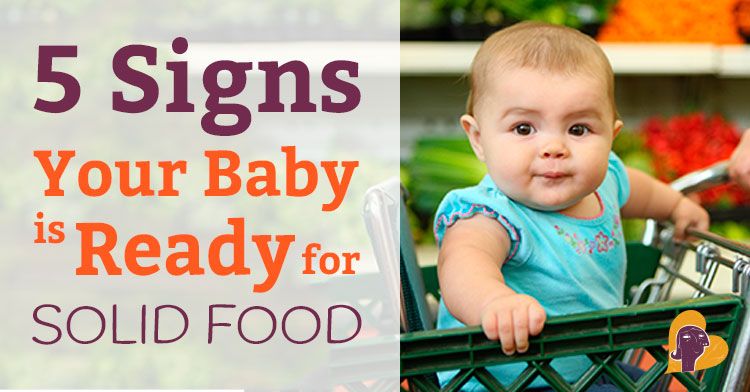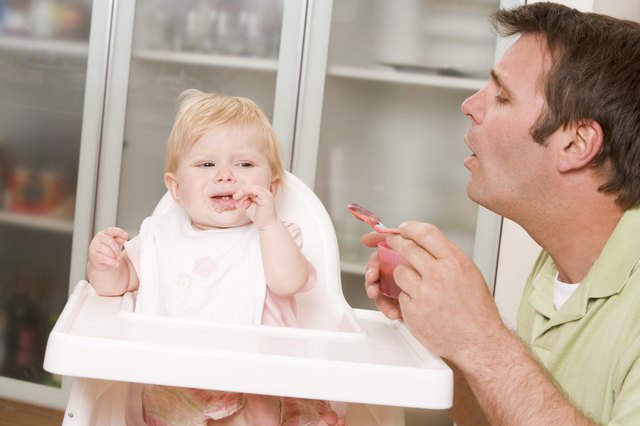List of baby food to start with
When to Start Baby Food
Starting solids is an exciting and important milestone in baby’s development—one that not only opens them up to a brand-new world of flavors and textures, but also puts them on the right path to growing healthy and strong. Here’s what you need to know about how and when to start baby food for a smooth transition.
In this article:
When to start baby food
How to start baby on solids
Best first foods for baby
Introducing allergenic foods
When to Start Baby Food
Knowing when to start baby food is both crucial and tricky. Starting baby on solids too early means you might increase the risk of choking, obesity and bellyaches, but introducing solids too late means you might slow baby’s growth and encourage an aversion to solid foods, among other conditions. Fortunately, doctors have zeroed in on a sweet spot for starting baby food, which is sometime between 4 and 6 months of age—though, ideally, baby should be receiving their nutrition exclusively from breast milk until the six-month mark, according to the American Academy of Pediatrics (AAP). How to tell if it’s time for starting solids for your little one? Baby will give you clues, including:
• Baby can sit in a high chair comfortably on their own. This is a major sign in terms of when to start baby food, says Lauren Kupersmith, MD, a pediatrician at Hassenfeld Children’s Hospital at NYU Langone in New York City. It means baby can hold their head up and doesn’t need to be propped up to stay in the upright position, which is important to avoid choking.
• Baby looks interested at mealtime. Babies likes to mimic what we do, so if your child likes to sit up like a big kid and watch you eat, then by all means let them try eating too.
• Baby can move food to the back of their throat to swallow. But if baby tends to push the food out of their mouth—not because they don’t like it, but because they can’t seem to get the food to where it needs to go—hold off on starting solids.
How to Start Baby on Solids
At 4 to 6 months, most of baby’s nutrition will still come from breast milk or formula, so don’t worry if baby doesn’t like eating food right away. Introducing solids is a gradual process, and every baby learns in their own time. Here are some general guidelines for how to start baby on solids:
Introducing solids is a gradual process, and every baby learns in their own time. Here are some general guidelines for how to start baby on solids:
• Feed baby with a spoon. Letting your child go at it with their hands may seem tempting (and super-cute), but it’s best that they learn the right way from the get-go. (And even then, be prepared to clean up more than a few messes!) Also, never put cereal (or any other food) in baby’s bottle—it’s a choking hazard.
• Start slowly. When introducing solids, a half spoonful will do at first—you may even want to talk baby through it (“Yummy!”). To make it easier for baby to get accustomed to the idea of swallowing solids, start mealtime with a little breast milk or formula, then offer some food (again, no more than a half teaspoon at a time) and finish off with more breast milk or formula. If baby cries or turns away when you present the spoon, try again some other time. Start off with introducing solids at one meal a day, then slowly work your way up. The morning is a good place to start, since baby is often hungriest at that time. When starting solids, baby typically won’t eat more than an ounce or two in one sitting.
The morning is a good place to start, since baby is often hungriest at that time. When starting solids, baby typically won’t eat more than an ounce or two in one sitting.
• Try new foods more than once. Since babies’ tastes will evolve, you may need to try a food 20 times before a baby actually likes it, says Kupersmith.
• Stick with the same food for three days before trying another one. This makes it easy to track whether baby is allergic to a particular food.
• Try foods in different forms. If baby doesn’t like pureed food, try it mashed. After all, baby is learning about new textures as well as new tastes. It may be a case of trial and error until you find a winner.
Best First Foods for Baby
Got baby safely strapped into the high chair and bib? You’re ready to finally start feeding baby solids! There aren’t any official food rules for babies starting solids, and there’s no scientific evidence suggesting you should introduce one type of food before another, assuming the foods aren’t choking hazards.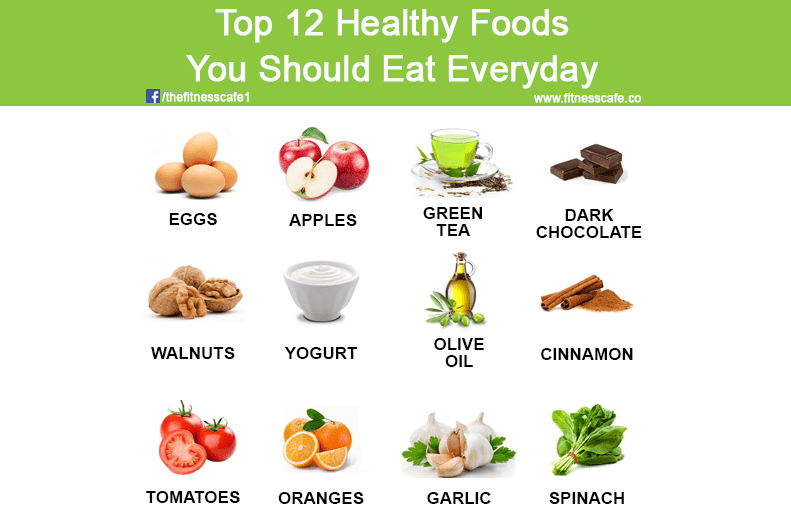 Nevertheless, baby cereal (such as oatmeal, rice and barley) is an “easy training food,” says Kupersmith, which is why it’s often recommended as baby’s first food; you can always mix it with more milk to build up to a thicker consistency. Many doctors also recommend starting vegetables before fruits, but there’s no evidence that this would make babies like vegetables more when they grow up—babies innately love sweets, and the order of introducing solids to baby doesn’t change that.
Nevertheless, baby cereal (such as oatmeal, rice and barley) is an “easy training food,” says Kupersmith, which is why it’s often recommended as baby’s first food; you can always mix it with more milk to build up to a thicker consistency. Many doctors also recommend starting vegetables before fruits, but there’s no evidence that this would make babies like vegetables more when they grow up—babies innately love sweets, and the order of introducing solids to baby doesn’t change that.
So why not simply start introducing solids with something you think baby will like? Here are a few common first foods for baby that are healthy and easy to eat (and, in the case sweet potato and banana, also easy to digest). Whatever you decide to feed baby, mash it with a fork or puree before serving whenever introducing solids.
- Baby cereal, such as oatmeal, rice, barley
- Sweet potato
- Banana
- Avocado
- Apples
- Pears
- Green beans
- Butternut squash
If your child has been breastfeeding, check with your pediatrician about getting a jump on pureed chicken or beef when you’re starting solids. These foods contain easily absorbable forms of iron and zinc, which baby needs by 4 to 6 months, according to the AAP.
These foods contain easily absorbable forms of iron and zinc, which baby needs by 4 to 6 months, according to the AAP.
At around 9 months, baby should have already worked their way up to a variety of foods, including cereal, vegetables, fruits, meats, eggs and fish (see below regarding the last two). (Keep in mind, though, that baby will still get the majority of their nutrients from breast milk or formula until age one.) By now, baby will probably settle on three meals a day along with two snacks. Let them consume about 4 ounces of solids at each meal (equivalent to a small jar of strained baby food) and about half that amount for each snack.
Save honey and cow’s milk for after baby’s first birthday—there’s a risk for infant botulism with honey (a type of bacterial poisoning), and baby’s tummy isn’t prepared to digest large amounts of cow’s milk until they’re about one year old. Avoid adult processed foods and foods that are choking hazards (such as sticky foods, like large gobs of peanut butter; hard foods that are difficult to gum, like raw vegetables, nuts, seeds and popcorn; and round, slippery foods that haven’t been cut up, like grapes and cherry tomatoes).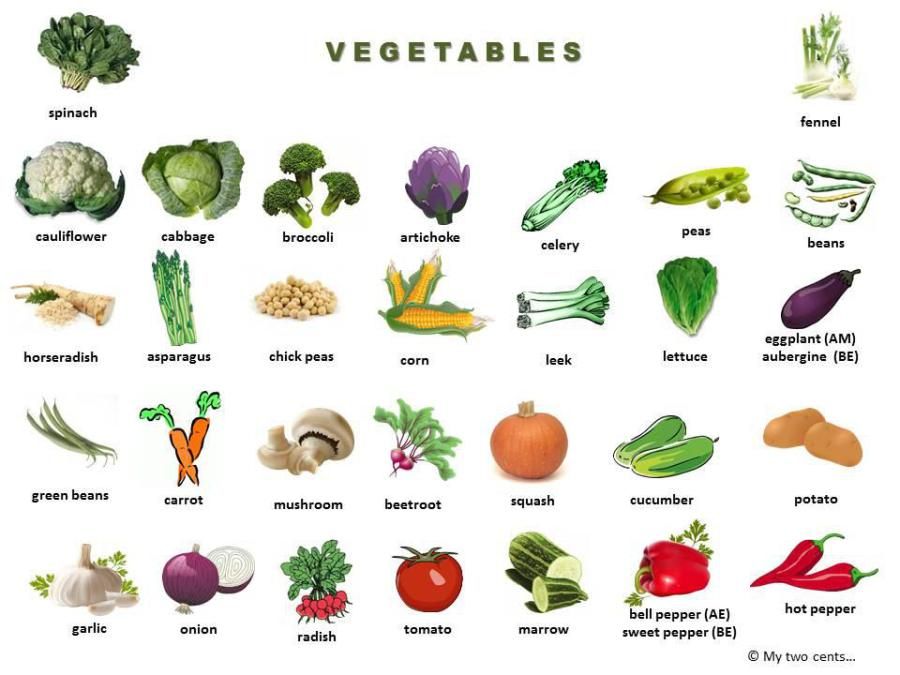 Instead, the first foods for baby, and those in the months that follow, should be soft and served mashed, pureed or (once baby seems ready to move up from the really mushy stuff) cut up into really little bits. “There’s pretty much free reign at that point,” Kupersmith says.
Instead, the first foods for baby, and those in the months that follow, should be soft and served mashed, pureed or (once baby seems ready to move up from the really mushy stuff) cut up into really little bits. “There’s pretty much free reign at that point,” Kupersmith says.
Introducing Solids Chart
Hesitant about improvising your first foods for baby? That’s okay too. If you prefer an “introducing solids chart” to help you plan out baby’s path, the guide below can come in handy.
Image: The Bump
Introducing Allergenic Foods
Much of the confusion around when to start baby food stems from questions concerning allergenic foods. These are foods that babies are most often allergic to. The major culprits include dairy, eggs, fish, peanuts and tree nuts. In the past, parents were advised to hold off on exposing baby to these foods, but now doctors recommend introducing them early, often and in age-appropriate format, which means starting off with purees and soft textures.
“Dairy is an easy starting point, given options such as yogurt and cheese,” says David Stukus, MD, director of the Food Allergy Treatment Center at Nationwide Children’s Hospital and a spokesperson for the American College of Allergy, Asthma, & Immunology. You can also try scrambled eggs in small amounts, although baby may not be too pleased with the texture at first.
As far as peanut products go, the National Institutes of Health issued new guidelines in 2017 that encourage parents of children at high risk for peanut allergies to incorporate them into baby’s diet at 4 to 6 months of age. Giving these babies peanut products before the age of one actually decreases their risk of developing a peanut allergy before age 5 by 81 percent, compared to kids who are introduced to peanuts later in life. Parents of kids without the food allergy risk can start peanut products whenever they’d like, as long as the nuts are in an age-appropriate form: Peanut butter can be thinned out with water or mixed into a fruit or vegetable puree, and peanut powder can also be mixed into cereal and fruits. Don’t give whole peanuts or pieces of peanuts, since they’re a choking risk.
Don’t give whole peanuts or pieces of peanuts, since they’re a choking risk.
Allergic reactions to food are never just a fluke; they will happen with every exposure. Symptoms can range from mild (such as a rash or vomiting) to severe (such as trouble breathing). If baby has a food allergy, you’ll notice a reaction within minutes or up to two hours after eating the problematic food, Stukus says. If the symptoms are severe, call 911 right away. Otherwise, talk to your pediatrician; she can help confirm whether it’s an allergy or some other type of condition (such as a viral illness).
Expert bios:*
Lauren Kupersmith, MD, IBCLC, is a pediatrician and clinical instructor at Hassenfeld Children’s Hospital at NYU Langone in New York City, as well as a certified lactation consultant. She earned her medical degree from New York Medical College in 2005.
David Stukus, MD, is the director of the Food Allergy Treatment Center at Nationwide Children’s Hospital, an associate professor of pediatrics in the division of allergy and immunology and a spokesperson for the American College of Allergy, Asthma, & Immunology.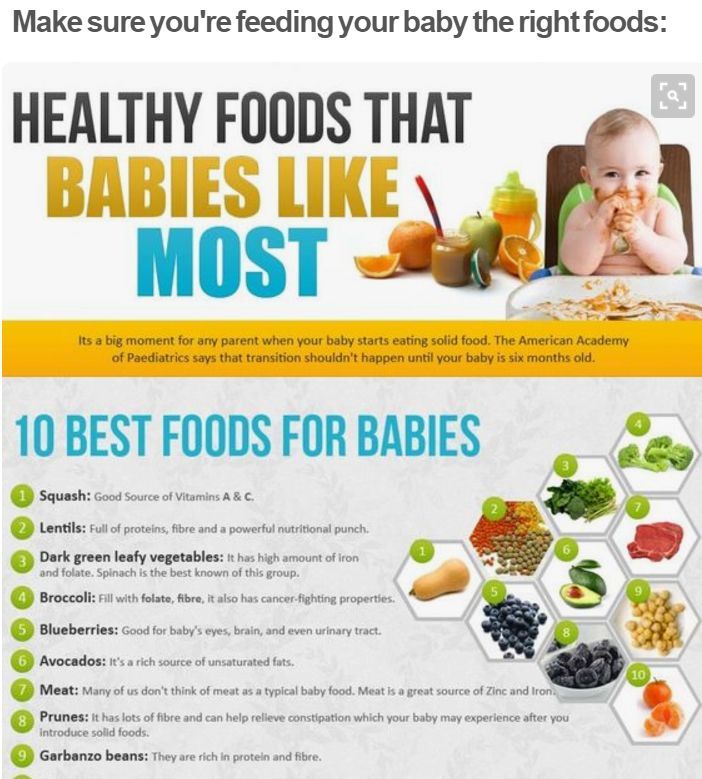 He earned his medical degree from University of Pittsburgh School of Medicine in 2002.
He earned his medical degree from University of Pittsburgh School of Medicine in 2002.
Updated January 2020
Please note: The Bump and the materials and information it contains are not intended to, and do not constitute, medical or other health advice or diagnosis and should not be used as such. You should always consult with a qualified physician or health professional about your specific circumstances.
The Ultimate Guide to Baby’s First Foods from 4-6 Months Old
If you have a baby between 4 and 6 months old, you’re probably starting to think about what their first foods will be…which means you probably have questions about baby’s first foods, too! Things like: “When should I start?” “Do I need to stick to single-ingredient foods?” and “How do I safely introduce common allergens like peanut butter without freaking out?!” Chances are, you miiiiight be a little overwhelmed at the idea of first foods, too. I know it’s a lot to think about, but the good news is that you’ve found your way here! And now that you’re here, I can help.
As a mom of two and a pediatric dietitian, I’m writing this post to help you navigate the nerves and the new chapter that is buying, preparing, and serving up baby’s first foods! Whether you’re going for purees, baby-led weaning, or a combination of both, consider this your ultimate guide to what first foods to serve and how to introduce them to your baby safely.
P.S. Don’t forget to save this post! I know it’s one you’ll want to come back to again and again.
This post contains affiliate links. As an Amazon Associate, I earn from qualifying purchases at no extra cost to you.
Skip right to the first foods info you’re looking for:
- When To Serve Baby Their First Foods
- Safety For Baby’s First Foods
- Purees vs. Baby-Led Weaning: What’s Right For You?
- The Best Foods To Introduce Baby To Between 4 & 6 Months Old
- The Ultimate Baby’s First Foods List
- Best Finger Foods & Baby-Led Weaning First Foods
- The Best Pureed First Foods
- The Best Easy-To-Make First Foods
- The Most Nutritious First Foods
- The Best Vegetarian First Foods
- Foods That Should Be Avoided
- Baby’s First Foods Chart: What, When & How To Serve Common First Foods to 4- to 6-Month-Old Babies
- First Foods For Babies With Allergies
When To Serve Baby Their First Foods
Although some people will serve baby’s first foods earlier, I recommend starting solids closer to the six-month mark. You want to avoid adding rice cereal or any other food to their bottle, and instead, begin solids when they display the signs of readiness listed below. By waiting to serve baby’s first foods until they’re truly ready, you increase their safety and chances of success as a new eater.
You want to avoid adding rice cereal or any other food to their bottle, and instead, begin solids when they display the signs of readiness listed below. By waiting to serve baby’s first foods until they’re truly ready, you increase their safety and chances of success as a new eater.
Signs of Eating Readiness
Your baby is ready to start solids if they:
- Can sit upright
- Can sit unsupported
- Have good head and neck control
- Have some practice bringing toys or objects from their hand to their mouth
- Show an interest in food (By reaching for what you’re eating, intently watching as others eat, etc.)
Can I Give My 4-Month-Old Baby Food?
Some pediatricians may okay solids around four months, but again, I generally recommend waiting until closer to six months, and when baby is displaying those signs of readiness.
There are more benefits to waiting than there are to starting earlier. Before six months, babies get everything they need from breastmilk or formula, so starting solids early won’t help them sleep better, grow faster, or, you know, become a professional athlete!
If you want to get your four- or five-month-old baby involved in mealtime, I recommend getting them acquainted with food and eating in these ways:
- Sit them near you while you’re eating
- Give them a silicone spoon to hold (I like NumNum GooTensils, EZPZ Tiny Spoons, and Olababy Training Spoons) and let them practice bringing it to their mouth
- Give them teething toys, like Sophie, or this elephant, to desensitize the gag reflex
FAQ: Do Formula- and Breast-Fed Babies Have Different Nutritional Needs?
Formula and breast milk are both completely nutritionally satisfactory for the first six months of life and beyond.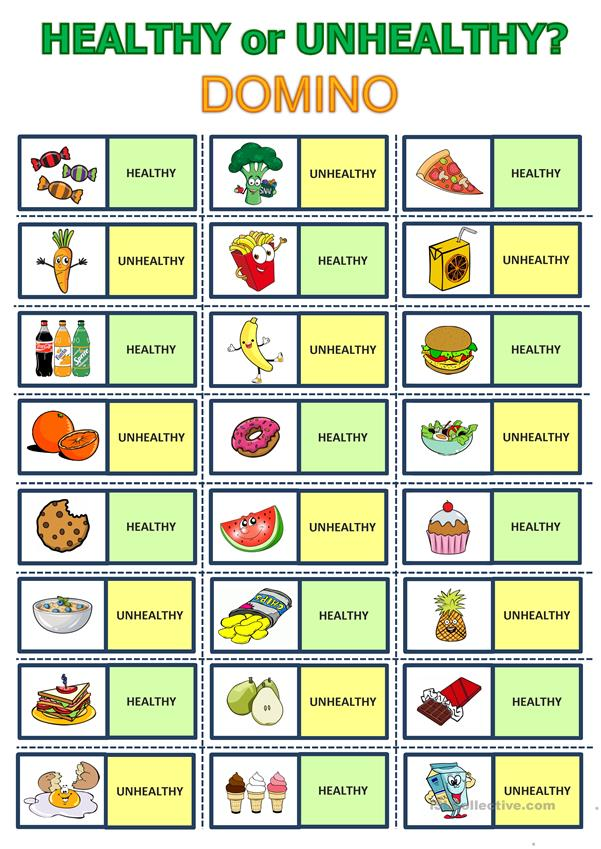 So when it comes to starting solids, it doesn’t matter whether your baby has been receiving breast milk or formula.
So when it comes to starting solids, it doesn’t matter whether your baby has been receiving breast milk or formula.
That said, babies who are exclusively breastfed should receive a Vitamin D supplement, as levels in breastmilk are low. Formulas on the other hand are typically fortified with Vitamin D, so formula-fed babies don’t need one. Another thing to consider for a baby’s nutrition is iron. Babies build up an iron reserve from their mothers while in utero, but these stores begin to decline around six months of age for all babies.
Safety For Baby’s First Foods
Safety is a huge concern for parents when starting solids. Whether you start with baby foods, purees, or baby-led weaning, there are certain parameters to follow to make sure baby’s intro to food is safe and successful.
Choking Hazards for 4- to 6-Month-Old Babies
Choking hazards for babies ages four to six months old include any foods that are hard, crunchy, sticky, or chewy, as well those that are dangerous shapes.
Common hazardous foods are:
- Chips
- Popcorn
- Pretzels
- Raw Apple
- Globs of Nut Butter
- Hot Dogs
- Grapes
- Large seeds (sunflower, pumpkin, for example)
- Whole nuts
Many of these foods can be prepared safely to minimize the risk of choking, but they remain a choking hazard if they’re in their “natural” states until children turn four years old.
You can minimize choking risks by making sure your child is seated upright and strapped in a high chair with good trunk support. Foot support on a high chair is also helpful when your baby is starting out because it reinforces their stability, and when they’re more stable, they can chew and swallow more safely!
AAP & CDC Recommendations
The Center for Disease Control and Prevention (CDC) and the American Academy of Pediatrics (AAP) recommend starting solids around six months of age, but not before four months. Again, some pediatricians may okay solids around four months of age, but I usually recommend waiting until six months to make sure baby is showing the physical signs of readiness I outlined above.
The one exception may be for introducing certain allergens to certain infants, depending on their inherent level of risk. Speak with your pediatrician or allergist to see if they want to start your baby on certain foods early.
Purees vs. Baby-Led Weaning: What’s Right For You?
Before you serve baby their first foods, you’ll need to decide what kinds of foods you want to offer. And while there’s a lot of dialogue and opinions about the “best” way to feed a baby, I want you to know there isn’t one right way to do this. You can start with purees or baby-led weaning, or you can do a combination of both.
Tip: If you take a puree approach, help them learn to self-feed by offering baby preloaded spoons and letting them bring the food to their mouth.
Babies are very intuitive about getting the nutrition they need, so full permission to opt for the feeding style that’s comfortable for you. They’ll be able to get enough to eat either way! If simple textures feel easier and lower-stress for you, start with purees.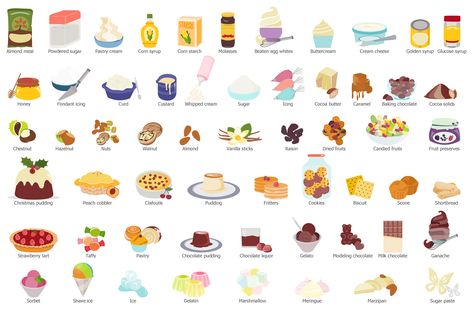 If you’re ready to tackle preparing foods in a way that’s safe for baby, go for baby-led weaning. And if you’re on the go a lot or need a caretaker to feed your baby sometimes, maybe a hybrid approach is best. It truly doesn’t matter as long as you’re helping them foster independence in eating, and offering a variety of different foods.
If you’re ready to tackle preparing foods in a way that’s safe for baby, go for baby-led weaning. And if you’re on the go a lot or need a caretaker to feed your baby sometimes, maybe a hybrid approach is best. It truly doesn’t matter as long as you’re helping them foster independence in eating, and offering a variety of different foods.
One thing that DOES matter when it comes to feeding your baby is letting them be in charge of how much they eat (while you learn to interpret their hunger and fullness cues). And you can do this whether you’re feeding them purees or finger foods.
Baby Signs Of Hunger:
- Reaching for food
- Moving toward the spoon
- Opening their mouth
- Pointing to food
- Excited at the sight of food
Baby Signs Of Fullness:
- Turning away from food
- Batting spoon away
- Clamping mouth shut
- Playing with/throwing food
- Significantly slowed pace of eating
- No longer showing interest
The Best Foods To Introduce Baby To Between 4 & 6 Months Old
A common question I get is, “What baby foods should I introduce first?” And really, there isn’t one “best” first food.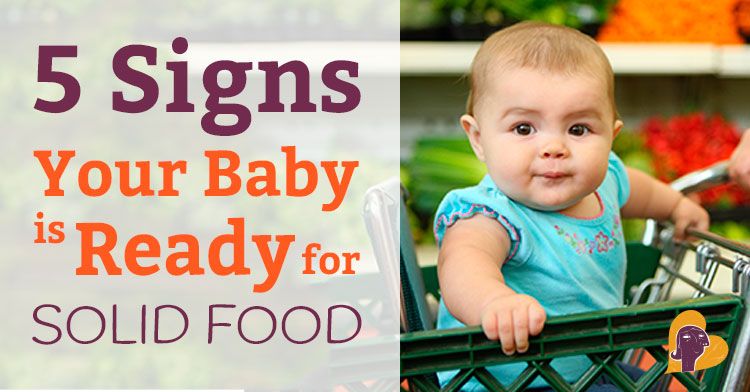 You do not have to start with only baby cereal or only veggies or fruits. In fact, you shouldn’t! Research shows that introducing babies to a wide variety of foods early on is what’s most beneficial.
You do not have to start with only baby cereal or only veggies or fruits. In fact, you shouldn’t! Research shows that introducing babies to a wide variety of foods early on is what’s most beneficial.
That said, my favorite first food is avocado! It’s a wonderful source of healthy fat, and it’s loaded with vitamins and minerals. Fat is essential to the developing brain and central nervous system, so we want to prioritize it within a baby’s first foods and make sure it’s completely unrestricted during their first two years of life.
(We also want to prioritize iron, because it’s a common dietary deficiency, and our babies begin to run out of the iron stores they got in utero by about six months.)
It’s Okay If Baby’s First Foods Have Multiple Ingredients!
You may choose to serve solely single-ingredient foods like avocado or sweet potato, but know that it’s not necessary to do so. It can be really helpful to serve a variety of new foods together, so they get used to different tastes and textures. Plus, there are nutritional benefits to mixing foods. For example, yogurt—a common first food for babies—can be fortified with mashed fruit, nut butter, or hemp seeds to up the nutritional value. (But if you ever notice a reaction or suspect an allergy to a component of a food combination you’ve been serving, stop serving the suspected allergen and contact your pediatrician.)
Plus, there are nutritional benefits to mixing foods. For example, yogurt—a common first food for babies—can be fortified with mashed fruit, nut butter, or hemp seeds to up the nutritional value. (But if you ever notice a reaction or suspect an allergy to a component of a food combination you’ve been serving, stop serving the suspected allergen and contact your pediatrician.)
PSA: Skip The Baby Cereal
The recommendations from years past telling parents to start with rice-based infant cereals are outdated now. Rice cereals aren’t super nutritious, and we don’t want to rely too much on rice due to potential exposure to arsenic. So instead of cereals, offer new foods in safely-prepared forms. This is way more nutritious, and it exposes them to different flavors, textures, and nutrients which are beneficial for growth and development and can protect them against food allergies and picky eating.
The Ultimate List of Baby Foods
I’m covering allll the best kinds of baby foods separately, so you get all the juicy info and context you need.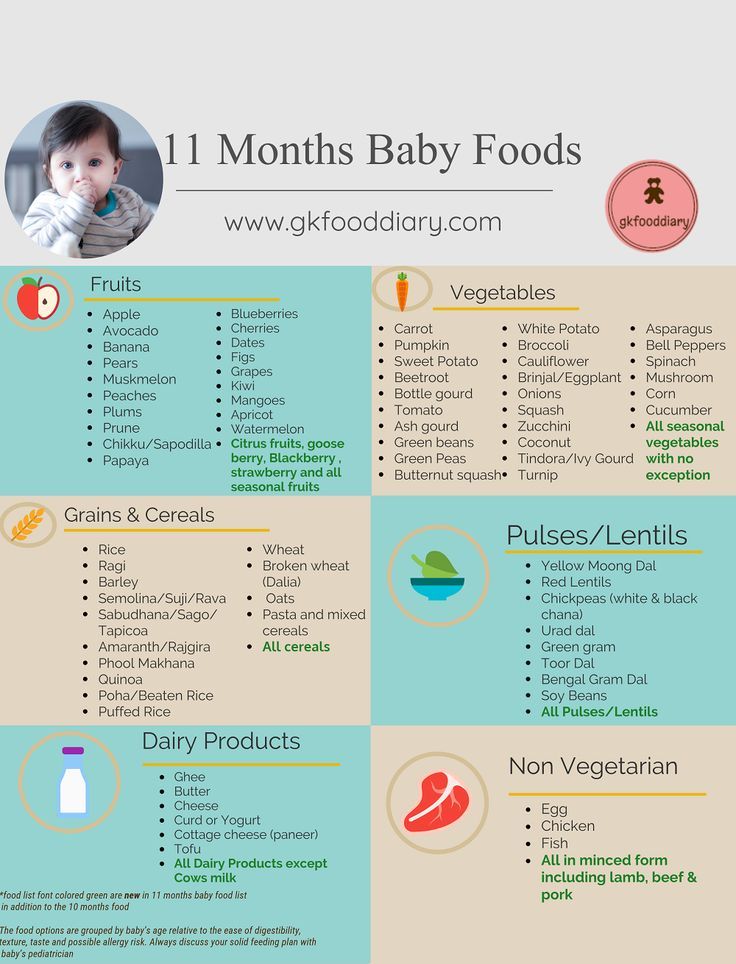 Then, I’m combining them all into one big, bad, comprehensive list of the best first foods for baby at the end.
Then, I’m combining them all into one big, bad, comprehensive list of the best first foods for baby at the end.
SKIP TO THE LIST
Best Finger Foods & Baby-Led Weaning First Foods
For baby’s first foods, I like to suggest approachable options like avocado, sweet potato, and banana. These can be prepared and served baby-led-weaning-style by cutting them in wedges or crescent shapes that can be gripped with a palmar grasp. Bananas can be served as halves or in thirds-long ways. Just stick to serving items in longer shapes, about the width of two adult fingers, for the first few months of BLW. This way, baby can hold them and bring them to their mouth. Once your baby is a little bit older—usually around 9 months—many foods can be served safely in smaller pieces.
The Best Pureed First Foods
If you’re going the puree route, you can start with many of the same foods. Just mash up the sweet potato, avocado, banana—or whatever else, really!—and serve those as purees.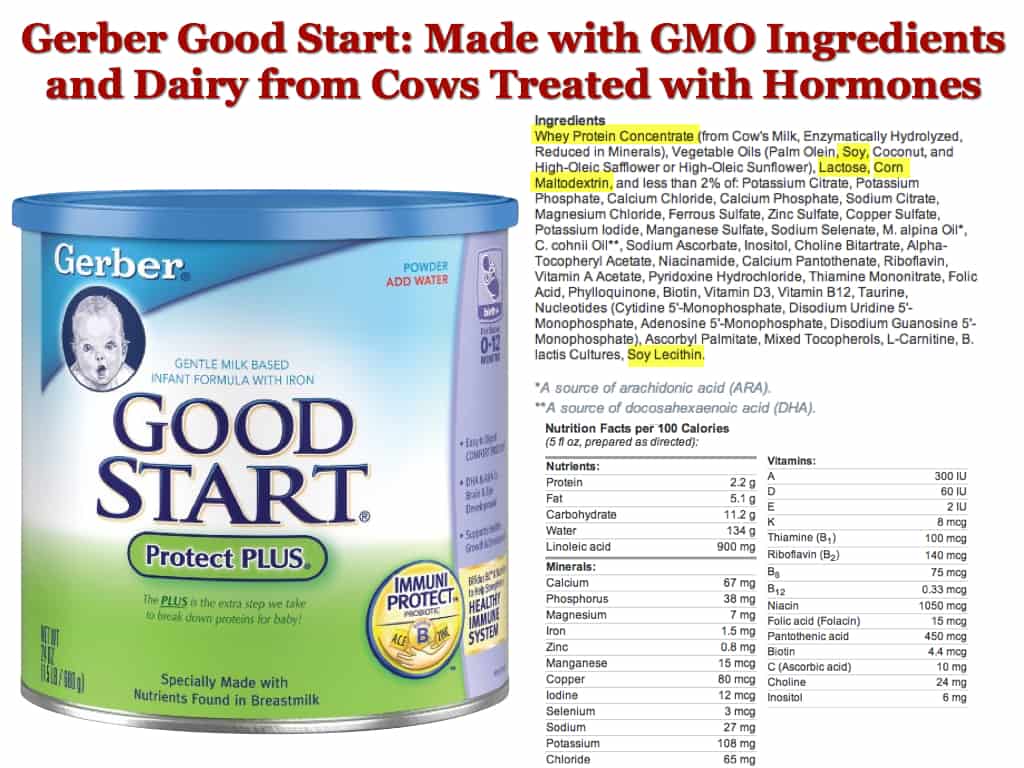 You may want to thin them some with breastmilk or formula.
You may want to thin them some with breastmilk or formula.
But shortly after starting with these foods, I would move on to introducing allergenic foods, because the early and repeated introduction of allergenic foods can be protective against the development of food allergies in babies, specifically for peanuts. Foods like yogurt and peanut butter may be good early options for allergenic introductions and are already in pureed form. Just start with small amounts.
The Best Easy-To-Make First Foods
Foods that are naturally soft are the easiest to prepare for young eaters. Banana, yogurt, apple sauce, and avocado are all great options that are easy to serve with little to no prep. You can also mix creamy nut butter with yogurt and incorporate other mashed fruits, like raspberries and blackberries, to ramp up the nutritional value while keeping prep extremely low.
Don’t feel like you need to shy away from foods that aren’t naturally soft, either! Many other fruits and veggies, like sweet potato, broccoli, and pears, can also be safely served with simple steaming or roasting techniques.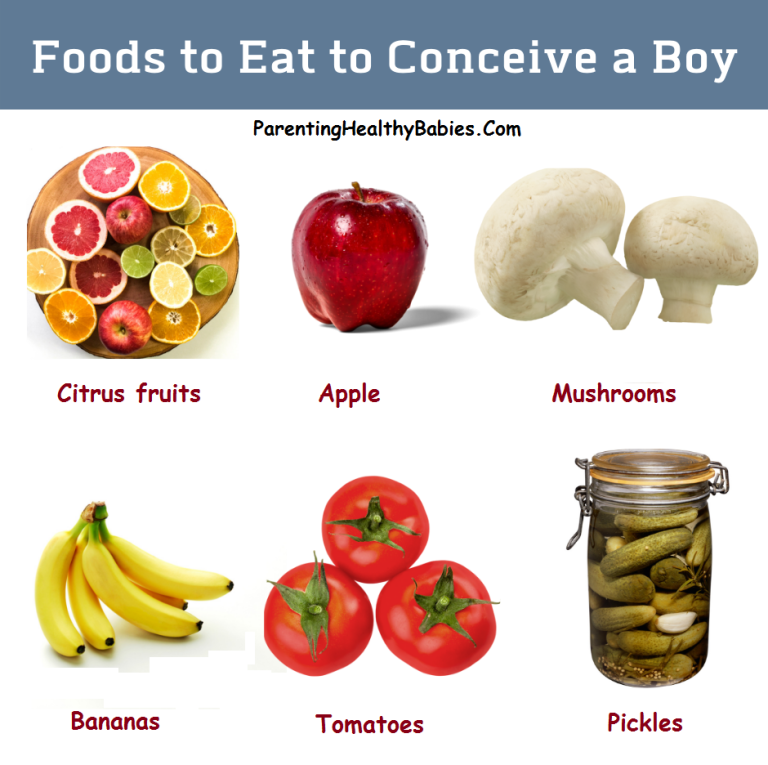 Just make sure to cook these foods until they’re soft enough to be smashed between your fingers, so baby can safely enjoy them, and present them in a shape or style that they can safely navigate. (Soft foods can also be served to them on a pre-loaded spoon if they can’t be eaten by hand, yet.)
Just make sure to cook these foods until they’re soft enough to be smashed between your fingers, so baby can safely enjoy them, and present them in a shape or style that they can safely navigate. (Soft foods can also be served to them on a pre-loaded spoon if they can’t be eaten by hand, yet.)
Low-Prep First Food Options:
- Banana
- Yogurt (Can mix with mashed berries or nut butter)
- Apple Sauce
- Avocado
- Steamed Veggies (Soft enough to mash between your fingers)
The Most Nutritious First Foods
There are so many great, nutrient-dense choices for baby’s first foods that are safe by six months of age no matter what type of foods you serve. (But it’s true that, if you take a baby-led weaning approach, you’ll probably have more options.) Sardines and salmon (fresh or canned) are both loaded with omega-3 fatty acids, DHA, protein, and tons of vitamins and minerals, which make them highly nutritious first foods! From the plant kingdom, sweet potato and avocado are nutrient-dense foods with a wide variety of vitamins and minerals including vitamin A, vitamin B6, vitamin C, and magnesium.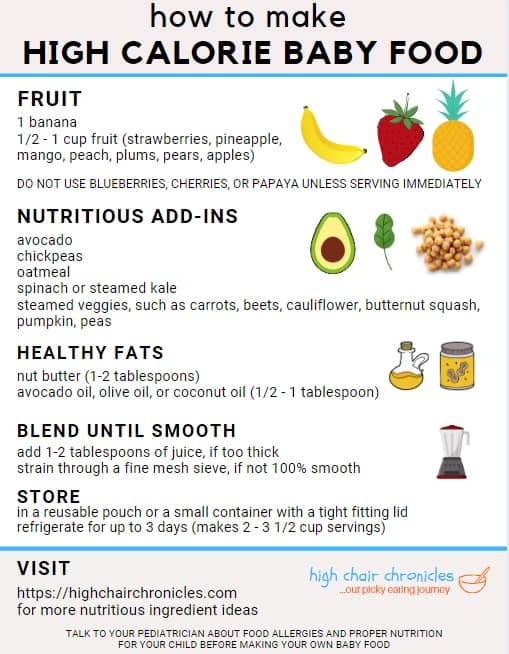
The Best Vegetarian First Foods
Vegetarian foods are some of the best first foods for baby! There are tons of wonderful and nutritious fruit and veggie options that suit young eaters, like berries, bananas, avocados, potatoes, broccoli, squash, and many others. Non-produce vegetarian items are great first foods for baby, too. Think tofu strips, eggs (yolk and white), beans, nut butter, and oatmeal.
Just be sure you serve these in safe shapes and forms, and that they’re soft enough to be mashed between your fingers. Always avoid serving things that are hard, sticky, or chewy, and keep in mind that many raw vegetables and fruits are choking hazards (like celery and apple).
Foods That Should Be Avoided
While most foods have a place in most diets, there are some foods to avoid serving your 4- to 6-month-old baby:
Added Sugar
To make sure our babies get the most nutrition possible during this important phase of growth and development, it’s best to avoid added sugar for children under two. Added sugar doesn’t have much nutritional value, so it’s best to limit it as much as possible and avoid it altogether if possible.
Added sugar doesn’t have much nutritional value, so it’s best to limit it as much as possible and avoid it altogether if possible.
Want to offer baby fun, homemade foods like cookies, bars, and muffins once they are fully established on solids? You still can! Just use the recipes in my No Sugar, Still Sweet cookbook, where everything is sweetened with fruit alone.
Honey
Babies should strictly avoid honey before 12 months of age. Honey can be contaminated with spores of a bacteria called clostridium botulinum. In babies under one, these spores can multiply and produce a dangerous toxin that causes infant botulism.
Related: Honey for Babies & Toddlers
Sodium
Finally, sodium should be limited. For babies ages four to six months, the recommended sodium limit intake for a day is 110 mg, which includes any sodium present in breast milk and/or formula.
Fruit Juice
The American Academy of Pediatrics recommends no fruit juice before 1 year of age. Juice offers very few nutritional benefits and therefore isn’t a helpful addition to a baby’s diet.
Juice offers very few nutritional benefits and therefore isn’t a helpful addition to a baby’s diet.
- Under 1: No Juice
- Age 1-3: 4 Oz Daily Max
- Age 4-6: 4-6 Oz Daily Max
- Age 7-18: 8 Oz Daily Max
The Ultimate Baby’s First Foods List
- Avocado
- Sweet Potato (Mashed or Steamed)
- Broccoli (Steamed or Roasted)
- Pears (Steamed or Roasted)
- Butternut Squash
- Mango
- Banana
- Yogurt*
- Nut Butter* (Mixed-In To Purees or Spread Thin on Toast)
- Oatmeal
- Apple Sauce
- Mashed Raspberries
- Mashed Blueberries
- Mashed Blackberries
- Canned Sardines*
- Canned Salmon*
- Potatoes (Mashed or Steamed)
- Squash (Steamed or Roasted)
- Tofu Strips*
- Baby-Safe Eggs* (Try omelet-style and cut into strips!)
- Beans (Mashed)
*Common Allergens
Baby’s First Foods Chart: What, When & How To Serve Common First Foods to 4- to 6-Month-Old Babies
| BABY’S FIRST FOOD | WHEN TO SERVE | HOW TO SERVE |
| Avocado | 6 Months or Later | Mashed, mixed-in to sauces, and purees, or in wedge shapes baby can grip (BLW). |
| Oatmeal | 6 Months of Later | Prepare with breastmilk or formula. Option to mix in yogurt, nut butter, mashed berries, or mashed banana. |
| Banana | 6 Months or Later | Mashed, mixed into sauces and purees, cut in halves or third-long pieces (BLW). |
| Sweet Potato | 6 Months or Later | Roasted or steamed so they’re soft enough to mash between your fingers. |
| Mango | 6 Months or Later | Cut into wedge-shaped pieces that baby can grip. Or, give baby the pit to work on! |
| Eggs (Common Allergen) | 6 Months or Earlier (If advised by a pediatrician or allergist) | Prepare eggs omelet-style and cut them into strips baby can grip. |
| Yogurt (Common Allergen) | 6 Months or Earlier (If advised by a pediatrician or allergist) | Serve yogurt as-is or mix it into sauces, oatmeals, or purees. |
| Nut Butter (Common Allergen) | 6 Months or Earlier (If advised by a pediatrician or allergist) | Mix nut butters into oatmeal or purees, or spread them thinly over toast. |
| Berries | 6 Months or Later | Mash berries into a thicker, jam-like consistency before serving. Consider mixing mashed berries into other foods. |
| Tofu (Common Allergen) | 6 Months or Earlier (If advised by a pediatrician or allergist) | Cut into thin strips that baby can grasp and fry them up in a pan. Serve cool or warm, not hot. |
| Broccoli | 6 Months or Later | Steamed or roasted so it’s soft enough to mash between your fingers. |
| Apple Sauce | 6 Months or Later | As-is or mixed in to oatmeal, yogurt, or purees. |
| Canned Sardines (Common Allergen) | 6 Months or Later | Whole piece or mashed with other foods. |
| Honey | 1 Year or Later | At 1 year or later, serve mixed-in to yogurt, sauces, or purees, or spread thinly on toast. |
| Fruit Juice | 1 year or Later | At 1 year or later, offer up to 4 oz per day.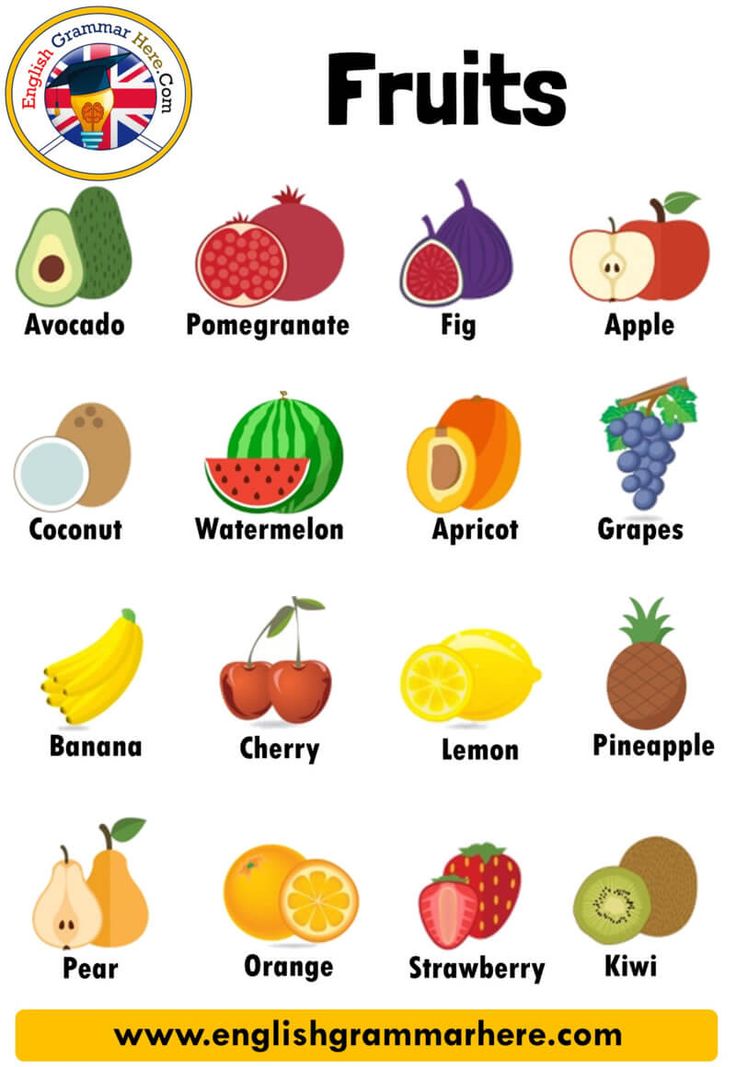 |
| Sugar | 2 Years or Later | Avoid added sugar before age two, then introduce it gradually and only as-needed. |
First Foods For Babies With Allergies
Food allergies have grown in prevalence over the last 50 years, and it’s now estimated that about 7% of babies have a food allergy! And while that can make choosing a baby’s first foods a little scary, the good news is that up to 80% of kids can grow out of their food allergies. (Especially when those allergies are milk and eggs!)
Important Information on Allergic Reactions & Introducing Allergens
For at least the last decade, parents were told to wait until 12 months or older to introduce the top eight allergens (peanut, tree nuts, eggs, milk, wheat, soy, fish, and shellfish) to their babies. Now, things are different. Today, we recommend introducing allergenic foods to your baby when they start solids, which, for most children, is around six months old. Introducing allergenic foods at this point in your baby’s development can reduce the risk of developing some food allergies—especially allergies to eggs and peanuts.
Introducing allergenic foods at this point in your baby’s development can reduce the risk of developing some food allergies—especially allergies to eggs and peanuts.
For Babies With Known Allergies
If your baby is already known to have a food allergy, do not introduce that food. But, if baby has certain risk factors WITHOUT a confirmed allergy (like eczema or a family member with a food allergy), consult the pediatrician. You may be referred to an allergist who will determine the best course of action with an introduction.
Introducing Allergens: What To Watch For
Mild allergic reactions may look like new hives around the mouth or face.
More severe reactions can include:
- Vomiting
- Lip Swelling
- Widespread Hives
- Face Or Tongue Swelling
- Difficulty Breathing
- Changes In Skin Color
- Sudden Lethargy Or Limpness
If you notice any of these severe signs, seek emergency medical help immediately.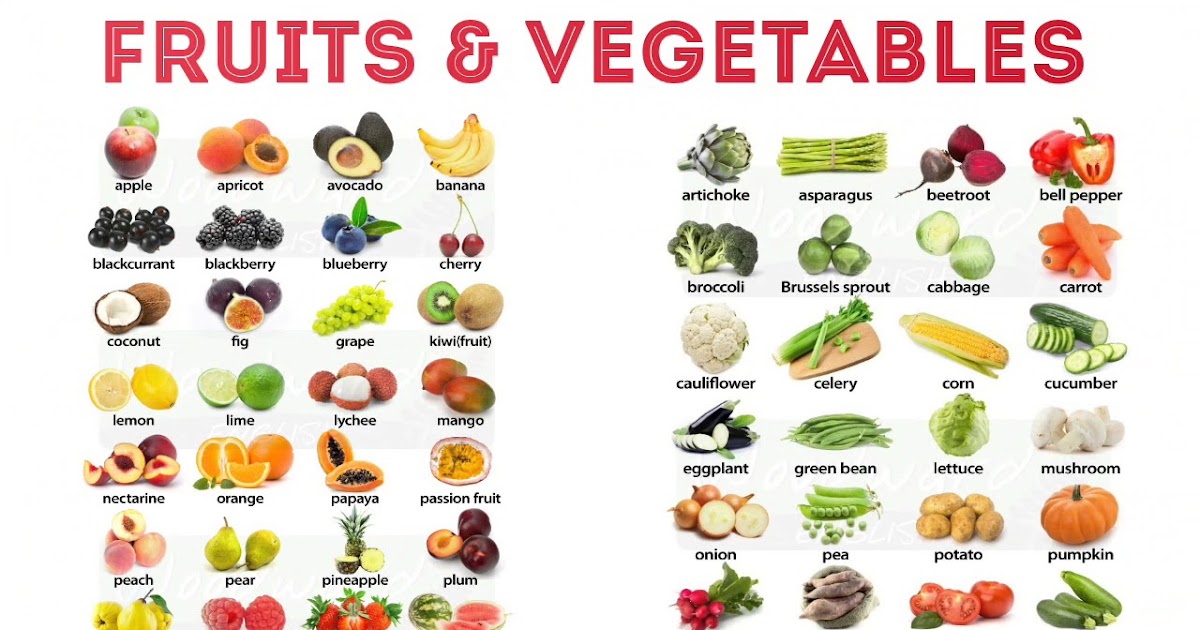
Make Starting Solids Simple
I know that getting ready to start serving your baby their first foods is nerve-wracking. But with the right info (which you now have) and prep (which you’re equipped to do), I promise you it can be a great experience. Now that you know all the things about safety, allergic reactions, which foods to serve, and how to serve them, go in with your bases covered and just enjoy the time spent with your little one.
I also know that if you decide to go with solids, you might be a little extra nervous about things like gagging and making all foods baby-safe. And, I get it! These things can be intimidating the first few times. Lucky for you though, you’re not alone! You’ve got me in your corner. I’ve been there before, I’ve helped so many parents navigate through it, and I know you can do it, too.
To help you up your confidence, ditch the unnecessary doubts, and feed them well right from the start, I put together my research-backed Simply Solids guide. If you’re about to start—or already on—your baby-feeding journey, Simply Solids is a must-have.
If you’re about to start—or already on—your baby-feeding journey, Simply Solids is a must-have.
START THE CAR! Simply Solids Is Usually $15, But Right Now It’s Free
.Trust me, you’ll be kicking yourself if you don’t grab your copy right the heck now 👇
Get The Free Guide
Baby’s First Foods
Summary of baby first foods 4 to 6 months some ideas in case you want a printer friendly list!
No ratings yet
Print Recipe Pin RecipePrep Time 5 mins
Cook Time 5 mins
Total Time 10 mins
Course Breakfast, Dinner, lunch
Cuisine American
Servings 2 servings
Calories 50 kcal
- Avocado
- Oatmeal
- Banana
- Sweet Potato
- Mango
- Eggs (Common Allergen)
- Yogurt (Common Allergen)
- Nut Butter (Common Allergen)
- Berries
- Tofu (Common Allergen)
- Broccoli
- Apple Sauce
- Canned Sardines (Common Allergen)
Mashed, mixed-in to sauces or purees, or in wedge shapes baby can grip (BLW).

Prepare with breastmilk, formula, canned coconut milk or water. Option to mix in yogurt, nut butter, mashed berries, or mashed banana.
Mashed, mixed into sauces and purees, cut in halves or third-long pieces (BLW).
Roasted or steamed so they’re soft enough to mash between your fingers. Or, serve mashed with a spoon.
Cut into wedge-shaped pieces that baby can grip. Or, give baby the pit to work on!
Serve yogurt as-is or mix it into sauces, oatmeals, or purees.
Mix nut butters into oatmeal or purees, or spread them thinly over toast.
Mash berries into a thicker, jam-like consistency before serving.
 Consider mixing mashed berries into other foods.
Consider mixing mashed berries into other foods.
Cut into thin strips that baby can grasp and fry them up in a pan. Serve cool or warm, not hot.
As-is or mixed in to oatmeal, yogurt, or purees.
Calories: 50kcal
Keyword baby
Tried this recipe?Let me know how it was!
Menu for a child - Encyclopedia Baby food
Levchuk Victoria©It is always very difficult for parents to make a menu for a child. Moreover, most pediatricians believe that the child's menu should be balanced in order to fully provide the child with all the necessary nutrients. Let's look at what a menu is, how to compose it, what you should pay attention to in the menu for a child from 0 months to 14 years old.
What is a menu?
Contents:
Menu is a list of recipes and dishes for a balanced wholesome diet for every day. The menu for the child should include 3 main meals and 2 snacks. Each meal is a building block in shaping a child's healthy eating style. How parents will feed the child depends on his future preferences in self-selection of food and nutrition.
The menu for the child should include 3 main meals and 2 snacks. Each meal is a building block in shaping a child's healthy eating style. How parents will feed the child depends on his future preferences in self-selection of food and nutrition.
The menu is prepared for adults and children. As an example, in educational institutions, children are fed on a children's menu, which is prepared taking into account the average needs of a relatively healthy audience.
Where is a children's menu usually required?
Children's menus are prepared in kindergartens and schools, and can also be offered in canteens, restaurants and cafes. Although it is rare for children to be offered healthy food in recent establishments, most likely these are foods that children will 100% eat. As usual, demand creates supply. And modern children love pizza, hot dogs and cola.
Menus can be different, we list the main menus for a child:
- Menu for a healthy child of different age groups
- A treatment menu focused on preventing a disease or improving the course of a disease
- A seasonal menu that takes into account the peculiarities of growing fruits and vegetables in the region where the family lives
- Menu for an allergic person also belongs to the treatment menu, but we will highlight it separately.
 The menu includes only products that can be eaten by the baby, without negative consequences for the baby's body
The menu includes only products that can be eaten by the baby, without negative consequences for the baby's body - Menu for pregnant and lactating mothers, I would also like to separately note.
- There are also food oriented menus, dairy menus or iron menus, etc.
- There is also a menu with one, two, three, four and five meals a day
- We also note the kindergarten menu, which is compiled according to SanPin standards with the support of the Ministry of Education. In each region of our great motherland, this menu will be different, sometimes the menu differs within the same city, because there are private kindergartens where parents pay for children's food in a larger volume than in an ordinary kindergarten.
But seriously, the menu for a child in pediatrics is divided into only 2 types, which in turn are compiled into different age groups:
- Medical menu;
- Menu for a healthy child.
The medical menu is also compiled according to diseases, because not all products can be eaten.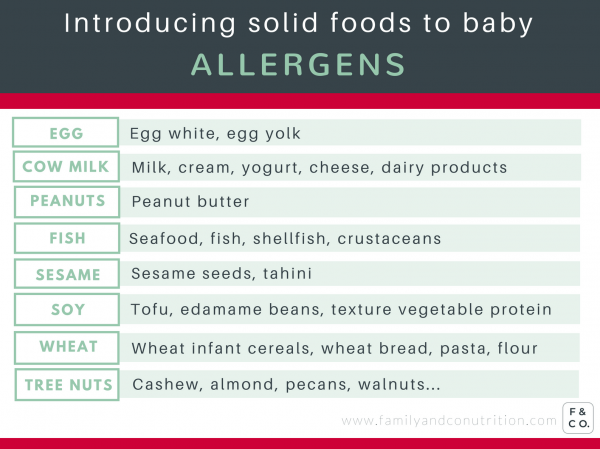 Therefore, there are medical tables or diets, there are about 15 of them, was compiled by Professor M.I. Pevznerov, who worked in the USSR in the field of dietetics and gastroenterology. These treatment tables are general recommendations, but there are also menus or diets designed for specific diseases, examples are given below.
Therefore, there are medical tables or diets, there are about 15 of them, was compiled by Professor M.I. Pevznerov, who worked in the USSR in the field of dietetics and gastroenterology. These treatment tables are general recommendations, but there are also menus or diets designed for specific diseases, examples are given below.
How to make a menu for a child
I know from my own experience that it is simply not possible to use someone else's menu. Therefore, you will have to spend a couple of days compiling your family’s menu, and you will have to do this every quarter for a year, but then it will be easier to modify it. If there is already a family menu, according to which a balanced diet is prepared, and food is purchased for a week and a month, then it will not be difficult to make a menu for the baby.
To begin with, if a child is introduced to complementary foods, then simply write on a piece of paper all the products with which he is familiar. I posted a similar menu.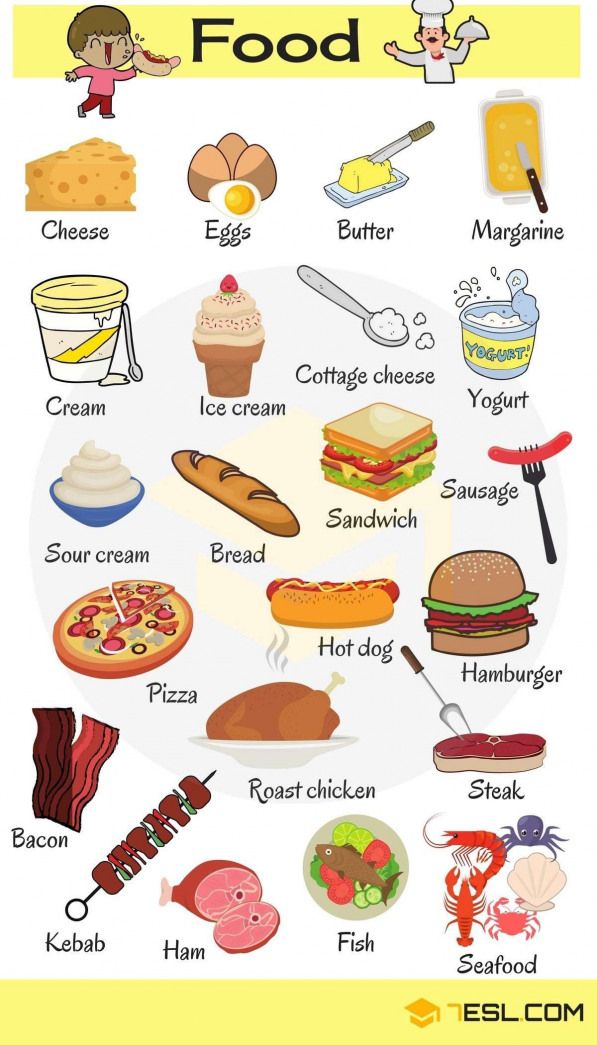
Click me!!!!
Based on this list and the age of the child, recipes for baby food are selected. But up to 8 months, everything is puree, so we simply create a combination of fruits, vegetables, meat, cereals, etc. Those. we, like jugglers, simply mix the same balls (foods that are in the refrigerator and introduced to the baby at the moment) and gradually add new balls (new products).
As parents get to know new products, they form a menu for the baby, first he eats complementary foods once a day, then with the introduction of 2 types of complementary foods - 2 times a day, etc. By the year the baby is fully on the adult way of eating - 3 main meals and 2 snacks. I wrote about this in detail in the articles in the “Beginning of Complementary Feeding” section, now we are looking at the photo of the menu for my child and paying attention to how new meals were formed. For me, the benchmark for proper baby food and menus is always the kindergarten menu. If you don't know how to feed a child, feed like in the garden, you can't go wrong.
But after a year, I want the child to eat everything that the rest of the family eats, because the mother is simply tired of cooking separately for the baby, and separately for others.
It is important to make a list of all the dishes and recipes that the family eats. Other people's ideas are in the furnace, we write our signature dishes, festive, everyday, routine, fast and super-fast, we include frozen semi-finished products, and various methods / recipes that make a woman's life easier in cooking. This list can be replenished, preferably with the right recipes that are good for health.
After making the list, think about how you are ready to eat, don't think about the child, think about yourself. For example, I can't live without soup or borscht for lunch, this is a habit from childhood, I also like to eat meat with a side dish for dinner, this is also a habit from childhood. But I have new habits, a fruit snack, so I can’t do without it, and I also have a vegetable salad for lunch, and I love fish and I’m ready to eat it once a week, I know that I need more, so we add fish salad also 1 time per week.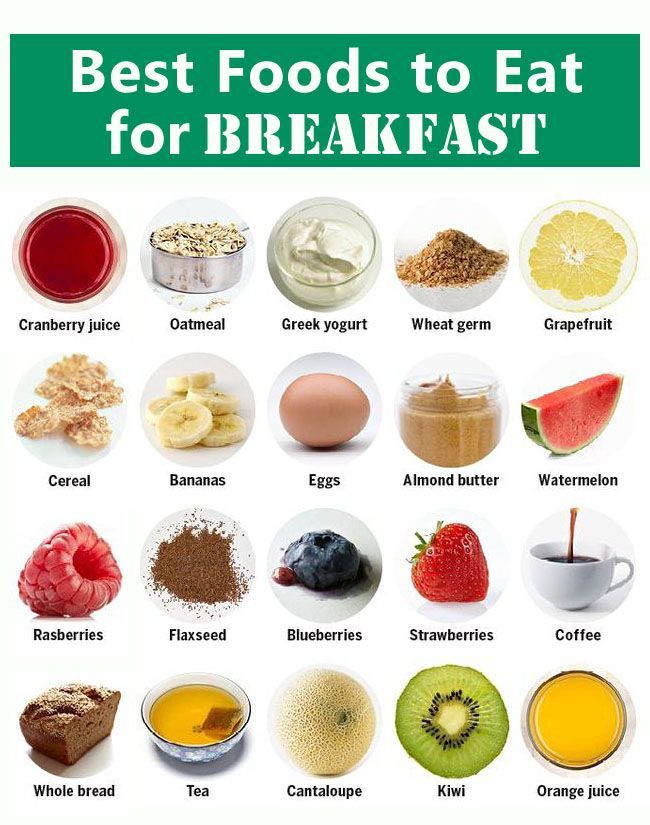
I also have a quick dinner on Fridays, when I cook for 20 minutes, and there is also a pizza dinner or cottage cheese dumplings for breakfast, these are habits without which I do not want and will not live. But I want innovation and expression in cooking, so I need to plan days of novelties and extraordinary dishes on the menu, write them for the weekend, on other days I don’t have enough strength, no matter what.
Based on our eating habits, we take other family members into account and create a menu. How to draw up a menu, you will immediately understand what products are not enough for a balanced diet, for example, at one time when compiling my menu, I realized that we do not eat legumes at all, so I learned how to cook them for a long time, and now we definitely eat them 1 time per week.
Now we get to the children's menu. A child already eats a lot of food from the common table a year, but not all, so every year, or maybe six months, you will have to revise the children's menu. But first you need to compose it. We just take a list and our eating habits, tick off what your child can eat from this. Noted. OK! Now we combine our menu and the child, we analyze what he can eat from the common table, and what else to add to his table.
But first you need to compose it. We just take a list and our eating habits, tick off what your child can eat from this. Noted. OK! Now we combine our menu and the child, we analyze what he can eat from the common table, and what else to add to his table.
And a life hack, there should be a lot of finger food in the fridge, or at least cheese and eggs, bread and cookies. If you add half an egg, a piece of cucumber, boiled carrots and bread to the soup, then the child will not remain hungry. I don’t plan such moments, it’s just that the youngest member of the family receives more food at a time than everyone else. A little one is only developing taste and preferences, so in order not to forget anything, we constantly remind, but with older children it’s more difficult.
Finally, the menu for the child and the family must change constantly. I am satisfied with the 5 week menu, it is made for the future, taking into account the preferences and habits of the family. It’s about, I don’t always cook clearly according to it, don’t think, if I have fish soup on the menu, and I haven’t eaten borscht yet, then something is thrown out and a new one is cooked, no. The menu is compiled for the convenience of shopping and unloading the brain, eat up everything that is in the refrigerator, move on to the dishes of the next day - cook. Plus, sometimes I go down and cook the same dishes all the time, it doesn’t suit me, but on the menu I see that there was already borscht and you can cook cabbage soup, etc.
The menu is compiled for the convenience of shopping and unloading the brain, eat up everything that is in the refrigerator, move on to the dishes of the next day - cook. Plus, sometimes I go down and cook the same dishes all the time, it doesn’t suit me, but on the menu I see that there was already borscht and you can cook cabbage soup, etc.
Another list of foods that a child is allergic to should be visible, and a list of prohibited foods, in your opinion, should also be in front of your eyes until a certain age. For example, mushrooms.
I also have a list of how many times a week to give this or that product, it seems to me that up to 3 years it is important to consider this in the menu.
If it is important that the baby eat certain foods, for example, if there is a certain menu for rickets, then we also make a list.
Briefly:
- List of all family meals and recipes
- List of food habits you can't live without or feel sad!
- List of new food habits, for example, adding fish to the menu
- Compiling an adult 5 week menu in complementary foods, prohibited foods and allergic foods, how many times a week to give the product.
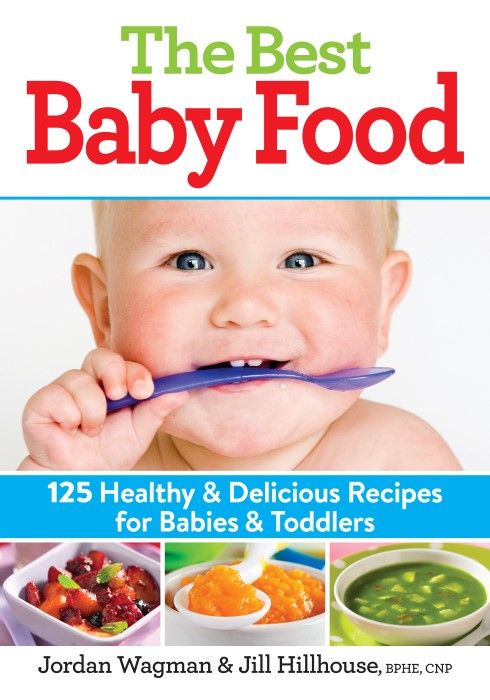
- We make a list of finger food that is always in the refrigerator and can be given to a child.
- We make a menu for the child, based on the analysis of the above points.
Well, that's easy!!! Yes, I'm kidding, it's not easy and at first it will be problematic, there will be subsidence in the child's menu, but I believe everything will work out.
Remember, fruit is the perfect snack, a small child doesn't need to invent bomb original snack, give an apple and calm down. Now there is such a variety of fruits and vegetables available that you can rotate foods for a week without ever repeating yourself.
Why don't you complicate things, everything should be simple and fast, once a week you can get confused and make it difficult, especially if dad is sitting with the children.
My family's 5-week menu
I realized long ago that meals need to be planned, otherwise the family starts to eat quick unhealthy snacks or constantly the same dishes. If there is no healthy food in the closet or refrigerator, then the child eats something sweet or harmful. Therefore, we do not buy chips, crackers, carbonated drinks, etc. Rarely do we buy sweets, cookies, marshmallows and dried fruits, although I try to take healthy analogues, but advertising from my son's comrades sometimes works better than all my arguments for usefulness and health. Plus, grandmothers don’t refuse anything to my child, they want Pepsi, they get Pepsi, and then, no matter how I swear and stomp my feet, I can’t not take them to relatives, as a result, I work with the baby already at home.
If there is no healthy food in the closet or refrigerator, then the child eats something sweet or harmful. Therefore, we do not buy chips, crackers, carbonated drinks, etc. Rarely do we buy sweets, cookies, marshmallows and dried fruits, although I try to take healthy analogues, but advertising from my son's comrades sometimes works better than all my arguments for usefulness and health. Plus, grandmothers don’t refuse anything to my child, they want Pepsi, they get Pepsi, and then, no matter how I swear and stomp my feet, I can’t not take them to relatives, as a result, I work with the baby already at home.
The menu was created for 5 weeks for the winter, it has not been changed for about a year, I adjust it according to the season along the way. Namely, it says a cupcake with a pumpkin, it is logical that there is no pumpkin yet, it’s not the season, so it’s just another fruit. Well, something like this! I think it's understandable! Herring under a fur coat is written - I make a regular cucumber and tomato salad. I'm just too lazy to write before the summer! Too many other things, I'm fine with this menu.
I'm just too lazy to write before the summer! Too many other things, I'm fine with this menu.
Snacks are also taken into account, but it’s not a fact that we will eat them according to the schedule, it’s just that it’s so convenient for me to make purchases, I know approximately how much I need to snack for a week, I buy it, and then didn’t eat it, so it lies and waits. Moreover, the menu is more of a winter option, because in summer there is more variety of snacks from fruits and vegetables, you can eat a cucumber or a peach. The younger child generally snacks on tomatoes.
And finally, it may seem to you that my menu is monotonous, but I remind you that I made it for myself and my family, based on preferences and habits. It is clear that yours may be different. Therefore, I write a menu for my family, it is better to compose it myself.
CLICK ON ME!!! Menu for 5 weeks of the Levchuk family! CLICK ON ME!!! Menu for 5 weeks of the Levchuk family! CLICK ON ME!!! Menu for 5 weeks of the Levchuk family! CLICK ON ME!!! Menu for 5 weeks of the Levchuk family! CLICK ON ME!!! Menu for 5 weeks of the Levchuk family!What not to include in the menu for the child
When preparing the menu for the child, it is important to remember the following:
- During the first three years of life, we avoid giving foods with a high risk of suffocation.
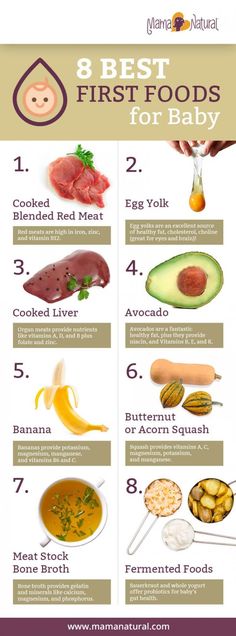 Therefore, we always look after the children during meals.
Therefore, we always look after the children during meals. - Cow's milk should not be given as a main drink until 12 months of age.
- Salt and sugar should not be added to children's food. Offering sweet and savory foods in early childhood may lead children to develop a preference for these foods.
- Foods high in saturated fat, sugar and/or salt (eg cakes, biscuits, pastries and potato chips) should not be given to children.
- Honey should not be given to children as it may contain bacterial spores which can cause botulism in children if given to children under 12 months of age. There is also a risk of allergies.
- Sweet drinks such as fruit juices and fruit drinks, flavored milk, soft drinks and alcoholic drinks should not be given to infants and children. These drinks add sugar to the diet and increase the risk of obesity and tooth decay.
- Tea (including herbal tea) and coffee are not suitable for infants and children.
This article does not discuss vegan and vegetarian menus for a child, this is the personal preference of each parent.
Kindergarten menu
Kindergarten-style cooking is very difficult. The food does not contain salt and sugar or contains its minimum amount, almost all products are cooked in special double boilers, without frying. The kindergarten menu is more balanced and complete, contains 1 and 2 dishes plus compote. Breakfast always consists of cereal porridge with milk, lunch is soup, and for the second meat or fish with a side dish, an afternoon snack is almost equal to dinner, it can contain both a full-fledged main course and a kefir bun. Plus fruit snacks in the form of a second breakfast. We don’t cook like that at home, for the most part, we don’t eat so much food, it’s rare that a woman manages to make so many changes in dishes.
kindergarten menuSee more photos of the kindergarten menu in the Contact group "Baby food (Encyclopedia)" at the link here.
Menu for a child from different books on baby food
I found in books on baby food not only a menu for several days or a week, but also how to make a menu, and also a food pyramid, I think it will be interesting.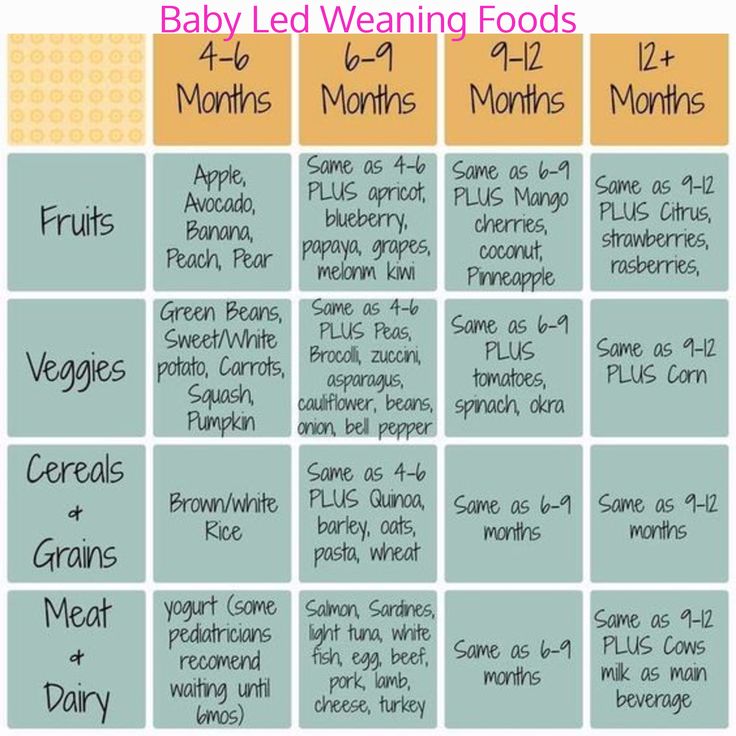 I will not give all the therapeutic diets, there are a lot of them, I have a book on “Clinical Dietetics of Childhood” by T.E. Borovik, K.S, Ladodo, it almost entirely consists of a medical menu, who are interested in selling it in online stores. Although I.M. Vorontsova A.V. Mazurin was more impressed with his menu compiled for the week, where I don’t know where to look for it, I bought it from second-hand booksellers. Photo attached, write if it is hard to see.
I will not give all the therapeutic diets, there are a lot of them, I have a book on “Clinical Dietetics of Childhood” by T.E. Borovik, K.S, Ladodo, it almost entirely consists of a medical menu, who are interested in selling it in online stores. Although I.M. Vorontsova A.V. Mazurin was more impressed with his menu compiled for the week, where I don’t know where to look for it, I bought it from second-hand booksellers. Photo attached, write if it is hard to see.
From Barnard N., Jennifer R. Healthy Eating for Children
CLICK ON ME!!!! Barnard N., Jennifer R. - Healthy Eating for Kids CLICK ON ME!!!! Barnard N., Jennifer R. - Healthy Eating for Kids CLICK ON ME!!!! Barnard N., Jennifer R. - Healthy Eating for Kids CLICK ON ME!!!! Barnard N., Jennifer R. - Healthy Eating for Kids CLICK ON ME!!!! Barnard N., Jennifer R. - Healthy Eating for Kids CLICK ON ME!!!! Barnard N., Jennifer R. - Healthy Eating for Kids CLICK ON ME!!!! Barnard N., Jennifer R. - Healthy Eating for Kids CLICK ON ME!!!! Barnard N. , Jennifer R. - Healthy Eating for Kids CLICK ON ME!!!! Barnard N., Jennifer R. - Healthy Eating for Kids CLICK ON ME!!!! Barnard N., Jennifer R. - Healthy Eating for Kids CLICK ON ME!!!! Barnard N., Jennifer R. - Healthy Eating for Kids CLICK ON ME!!!! Barnard N., Jennifer R. - Healthy Eating for Kids CLICK ON ME!!!! Barnard N., Jennifer R. - Healthy Eating for Kids
, Jennifer R. - Healthy Eating for Kids CLICK ON ME!!!! Barnard N., Jennifer R. - Healthy Eating for Kids CLICK ON ME!!!! Barnard N., Jennifer R. - Healthy Eating for Kids CLICK ON ME!!!! Barnard N., Jennifer R. - Healthy Eating for Kids CLICK ON ME!!!! Barnard N., Jennifer R. - Healthy Eating for Kids CLICK ON ME!!!! Barnard N., Jennifer R. - Healthy Eating for Kids From the book Baby food. The most necessary book for mothers and babies from birth to 3 years. T.I. Tarabarina
CLICK ON ME!!!! Children food. The most necessary book for mothers and mothers I hear from birth to 3 years. T.I. Tarabarina CLICK ON ME!!!! Children food. The most necessary book for mothers and mothers I hear from birth to 3 years. T.I. Tarabarina CLICK ON ME!!!! Children food. The most necessary book for mothers and mothers I hear from birth to 3 years. T.I. Tarabarina CLICK ON ME!!!! Children food. The most necessary book for mothers and mothers I hear from birth to 3 years. T.I. Tarabarina CLICK ON ME!!!! Children food.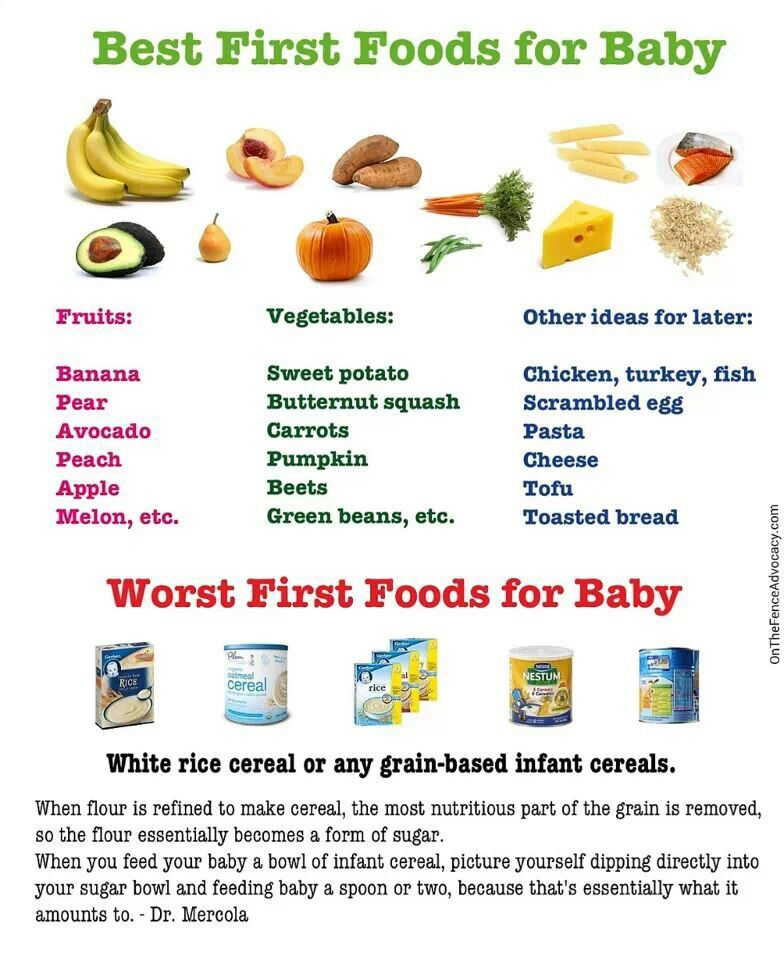 The most necessary book for mothers and mothers I hear from birth to 3 years. T.I. Tarabarina CLICK ON ME!!!! Children food. The most necessary book for mothers and mothers I hear from birth to 3 years. T.I. Tarabarina CLICK ON ME!!!! Children food. The most necessary book for mothers and mothers I hear from birth to 3 years. T.I. Tarabarina CLICK ON ME!!!! Children food. The most necessary book for mothers and mothers I hear from birth to 3 years. T.I. Tarabarina CLICK ON ME!!!! Children food. The most necessary book for mothers and mothers I hear from birth to 3 years. T.I. Tarabarina
The most necessary book for mothers and mothers I hear from birth to 3 years. T.I. Tarabarina CLICK ON ME!!!! Children food. The most necessary book for mothers and mothers I hear from birth to 3 years. T.I. Tarabarina CLICK ON ME!!!! Children food. The most necessary book for mothers and mothers I hear from birth to 3 years. T.I. Tarabarina CLICK ON ME!!!! Children food. The most necessary book for mothers and mothers I hear from birth to 3 years. T.I. Tarabarina CLICK ON ME!!!! Children food. The most necessary book for mothers and mothers I hear from birth to 3 years. T.I. Tarabarina From the books of Annabel Carmel Menu for the baby and Eat tasty
CLICK ON ME!!!! Menu for kids. Annabelle Carmel CLICK ON ME!!!! Menu for kids. Annabelle Carmel CLICK ON ME!!!! We eat delicious. Annabelle Carmel. CLICK ON ME!!!! We eat delicious. Annabelle Carmel. CLICK ON ME!!!! We eat delicious. Annabelle Carmel. CLICK ON ME!!!! We eat delicious. Annabelle Carmel. CLICK ON ME!!!! We eat delicious.From the book Handbook of Children's Diet. THEM. Vorontsova, A.V. Mazurin
CLICK ON ME!!! Handbook of children's diet. 1980 THEM. Vorontsova, A.V. Mazurin CLICK ON ME!!! Handbook of children's diet. 1980 THEM. Vorontsova, A.V. Mazurin CLICK ON ME!!! Handbook of children's diet. 1980 THEM. Vorontsova, A.V. Mazurin CLICK ON ME!!! Handbook of children's diet. 1980 THEM. Vorontsova, A.V. Mazurin CLICK ON ME!!! Handbook of children's diet. 1980 THEM. Vorontsova, A.V. Mazurin CLICK ON ME!!! Handbook of children's diet. 1980g. THEM. Vorontsova, A.V. Mazurin CLICK ON ME!!! Handbook of children's diet. 1980 THEM. Vorontsova, A.V. Mazurin CLICK ON ME!!! Handbook of children's diet. 1980 THEM. Vorontsova, A.V. Mazurin CLICK ON ME!!! Handbook of children's diet. 1980 THEM. Vorontsova, A.V. Mazurin CLICK ON ME!!! Handbook of children's diet. 1980 THEM. Vorontsova, A.V. Mazurin
1980 THEM. Vorontsova, A.V. Mazurin CLICK ON ME!!! Handbook of children's diet. 1980 THEM. Vorontsova, A.V. Mazurin From the book Foods and dishes in baby food by K.S. Ladodo L.V. Druzhinina
CLICK ON ME!!! Products and dishes in baby food K.S. Ladodo L.V. Druzhinina CLICK ON ME!!! Products and dishes in baby food K.S. Ladodo L.V. Druzhinina CLICK ON ME!!! Products and dishes in baby food K.S. Ladodo L.V. DruzhininaFrom the book Children's Kitchen 1988
CLICK ON ME!!! Children's kitchen 1988 CLICK ON ME!!! Children's kitchen 1988 CLICK ON ME!!! Children's kitchen 1988 CLICK ON ME!!! Children's kitchen 1988 CLICK ON ME!!! Children's kitchen 1988 CLICK ON ME!!! Children's kitchen 1988 CLICK ON ME!!! Children's kitchen 1988From the book Handbook for parents. Feeding and feeding a child from 0 to 5 years old with love and common sense. Allyn Satter
CLICK ON ME!!! Handbook for parents. Feeding and nourishing a child from 0 to 5 years old with love and common sense. Ellen Satter. CLICK ON ME!!! Handbook for parents. Feeding and nourishing a child from 0 to 5 years old with love and common sense. Ellen Satter. CLICK ON ME!!! Handbook for parents. Feeding and nourishing a child from 0 to 5 years old with love and common sense. Ellen Satter. CLICK ON ME!!! Handbook for parents. Feeding and nourishing a child from 0 to 5 years old with love and common sense. Ellen Satter. CLICK ON ME!!! Handbook for parents. Feeding and nourishing a child from 0 to 5 years old with love and common sense. Ellen Satter.
Ellen Satter. CLICK ON ME!!! Handbook for parents. Feeding and nourishing a child from 0 to 5 years old with love and common sense. Ellen Satter. CLICK ON ME!!! Handbook for parents. Feeding and nourishing a child from 0 to 5 years old with love and common sense. Ellen Satter. CLICK ON ME!!! Handbook for parents. Feeding and nourishing a child from 0 to 5 years old with love and common sense. Ellen Satter. CLICK ON ME!!! Handbook for parents. Feeding and nourishing a child from 0 to 5 years old with love and common sense. Ellen Satter. From the book Clinical Nutrition of Childhood. T.E. Borovik, K.S. Ladodo
Nutrition for diseases of the stomach and duodenum
CLICK ON ME!!! Clinical dietetics of childhood. T.E. Borovik, K.S. Ladodo CLICK ON ME!!! Clinical dietetics of childhood. T.E. Borovik, K.S. Ladodo CLICK ON ME!!! Clinical dietetics of childhood. T.E. Borovik, K.S. Ladodo CLICK ON ME!!! Clinical dietetics of childhood. T.E. Borovik, K.S. Ladodo CLICK ON ME!!! Clinical dietetics of childhood. T.E. Borovik, K.S. Ladodo CLICK ON ME!!! Clinical dietetics of childhood. T.E. Borovik, K.S. Ladodo CLICK ON ME!!! Clinical dietetics of childhood. T.E. Borovik, K.S. Ladodo CLICK ON ME!!! Clinical dietetics of childhood. T.E. Borovik, K.S. Ladodo
T.E. Borovik, K.S. Ladodo CLICK ON ME!!! Clinical dietetics of childhood. T.E. Borovik, K.S. Ladodo CLICK ON ME!!! Clinical dietetics of childhood. T.E. Borovik, K.S. Ladodo CLICK ON ME!!! Clinical dietetics of childhood. T.E. Borovik, K.S. Ladodo Therapeutic nutrition for constipation
CLICK ON ME!!! Clinical dietetics of childhood. T.E. Borovik, K.S. Ladodo CLICK ON ME!!! Clinical dietetics of childhood. T.E. Borovik, K.S. Ladodo CLICK ON ME!!! Clinical dietetics of childhood. T.E. Borovik, K.S. LadodoMedical nutrition for diarrhea
CLICK ON ME!!! Clinical dietetics of childhood. T.E. Borovik, K.S. Ladodo CLICK ON ME!!! Clinical dietetics of childhood. T.E. Borovik, K.S. Ladodo CLICK ON ME!!! Clinical dietetics of childhood. T.E. Borovik, K.S. Ladodo CLICK ON ME!!! Clinical dietetics of childhood. T.E. Borovik, K.S. Ladodo CLICK ON ME!!! Clinical dietetics of childhood. T.E. Borovik, K.S. LadodoNutrition in chronic renal failure
CLICK ON ME!!! Clinical dietetics of childhood. T.E. Borovik, K.S. Ladodo
T.E. Borovik, K.S. Ladodo
Medical nutrition for children with obesity
CLICK ON ME!!! Clinical dietetics of childhood. T.E. Borovik, K.S. Ladodo CLICK ON ME!!! Clinical dietetics of childhood. T.E. Borovik, K.S. LadodoTherapeutic nutrition for isovaleric acidemia and homocystinuria
CLICK ON ME!!! Clinical dietetics of childhood. T.E. Borovik, K.S. Ladodo CLICK ON ME!!! Clinical dietetics of childhood. T.E. Borovik, K.S. LadodoNext article on the topic - How to teach a child to chew.
Children's recipe - Encyclopedia Baby food
Victoria Levchuk©What is a children's recipe? I wonder how a children's recipe differs from an adult? A children's recipe is prepared for a baby, up to what age? How to adapt adult table dishes to children's recipes? We will try to answer these questions and even more. First, let's figure out what a recipe and a children's recipe are!
What is a prescription?
Table of contents:
Recipe is a set of instructions or a description of how to prepare a culinary dish.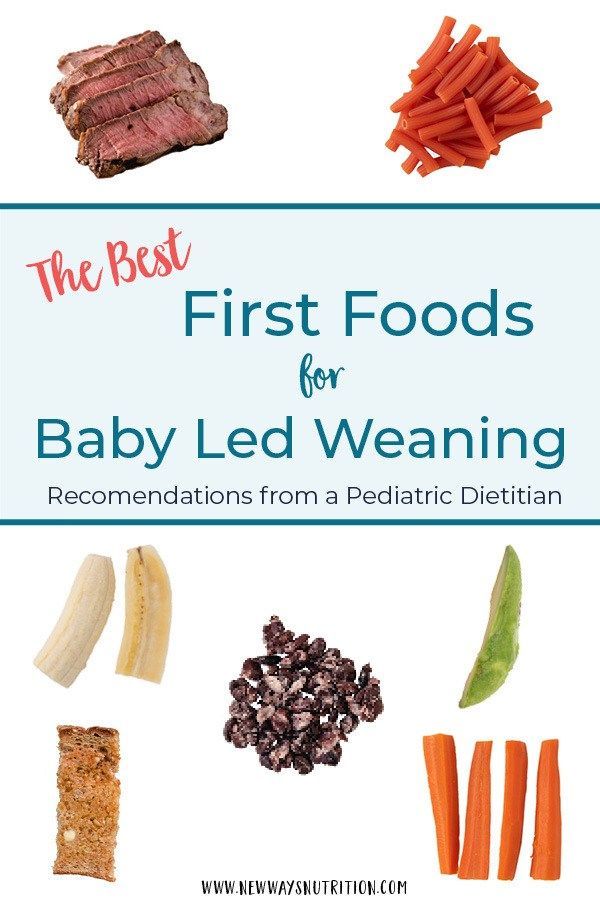 The word is also used in medicine or information technology. A doctor usually writes a prescription for medicines that can be obtained or bought at a pharmacy.
The word is also used in medicine or information technology. A doctor usually writes a prescription for medicines that can be obtained or bought at a pharmacy.
Prescription was originally a medical word. The recipe comes from the Latin "recipere" which means "to take". The word was first used in the 14th century as a verb rather than a noun. Only in the 16th century did the recipe become a noun and signify the recipe itself. Around the 17th century, the word recipe migrated from a medical topic to cooking and began to denote a method / instruction for preparing a dish.
The recipe consists of two main parts: the list of ingredients and the method of preparation. There are different styles of writing recipes, such as the drawn recipe. Ingredients are preceded by the name, number of servings, and serving size, if applicable. Then a list of ingredients and cooking method.
If the recipes are taken from some source and adapted, then you must indicate the source under the text of the recipe. Recipes need to be cooked before they are posted to make sure they work, the ingredients and serving sizes are right, and the food tastes amazing. If cooking is a flight of thought and inspiration, then you definitely need to take notes.
Recipes need to be cooked before they are posted to make sure they work, the ingredients and serving sizes are right, and the food tastes amazing. If cooking is a flight of thought and inspiration, then you definitely need to take notes.
At a minimum the recipe must contain the following information :
- the name of the dish
- the list of ingredients with the exact amount of each ingredient
- a description of how the dish is to be prepared and finished, this is called the cooking method
- Number of servings and time cooking.
Children's recipe is a way of preparing a dish, taking into account the characteristics of the child's age. Therefore, baby food is divided into 9 age stages0012 : 4-6 months, 7-8 months, 8-10 months, 10-12 months, 12-18 months, 18-24 months, 2-3 years, etc. The older the child becomes, the more parents move away in cooking from baby food and children's recipes towards adult cooking. The children's recipe includes dishes that are aimed at improving the child's body, which are balanced, varied and designed specifically for children. This does not mean that now it is necessary to prepare only children's recipes for children, and adults - for adults.
The children's recipe includes dishes that are aimed at improving the child's body, which are balanced, varied and designed specifically for children. This does not mean that now it is necessary to prepare only children's recipes for children, and adults - for adults.
It's just that in baby food there are rules for cooking, which are observed until the child completely switches to an adult diet or his body is sufficiently strong. Moreover, the rules gradually decrease with the age of the child and approach the usual recommendations for proper healthy eating.
Baby Food or Baby Prescription Rules
It is up to the child's parents to follow or not follow these guidelines.
Up to 10 months (age is approximate as parents look at their child and decide whether to follow this recommendation):
- Only fresh food is used for cooking, especially vegetables, fruits and dairy products.
- Children's prescription must contain foods that benefit the child's body.
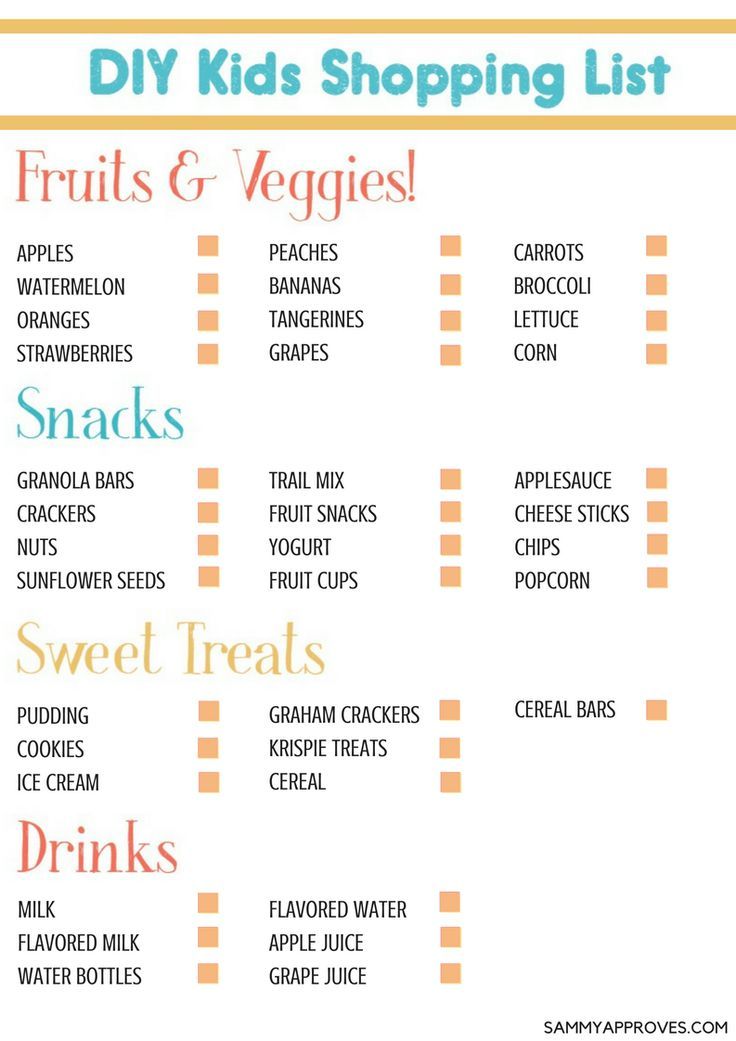
- Recipe must contain complex carbohydrates.
- Children's prescription must not contain processed foods, sugar or salt, and saturated fat.
- Main meals are less than 600 calories per serving.
- For every meal, a fresh dish, freshly prepared.
- Do not store the finished product for more than 24 hours.
CLICK ON ME!!! We eat delicious. Annabelle Carmel.
- The child eats foods that he is familiar with and does not have an allergic reaction.
- The new product is introduced into the diet gradually and carefully according to the rule of waiting in 4-7 days.
- Children's recipe provides the consistency of the finished dish, based on the age of the child.
Consistency of food up to a year. Click on me!!!
- Children's dishes are best cooked by steaming, if this is not possible, then bake, in extreme cases, boil in water, and stew the last, should not be fried in oil, at least up to 3 years.
- When freezing baby food, indicate the freezing date and freezer shelf life.
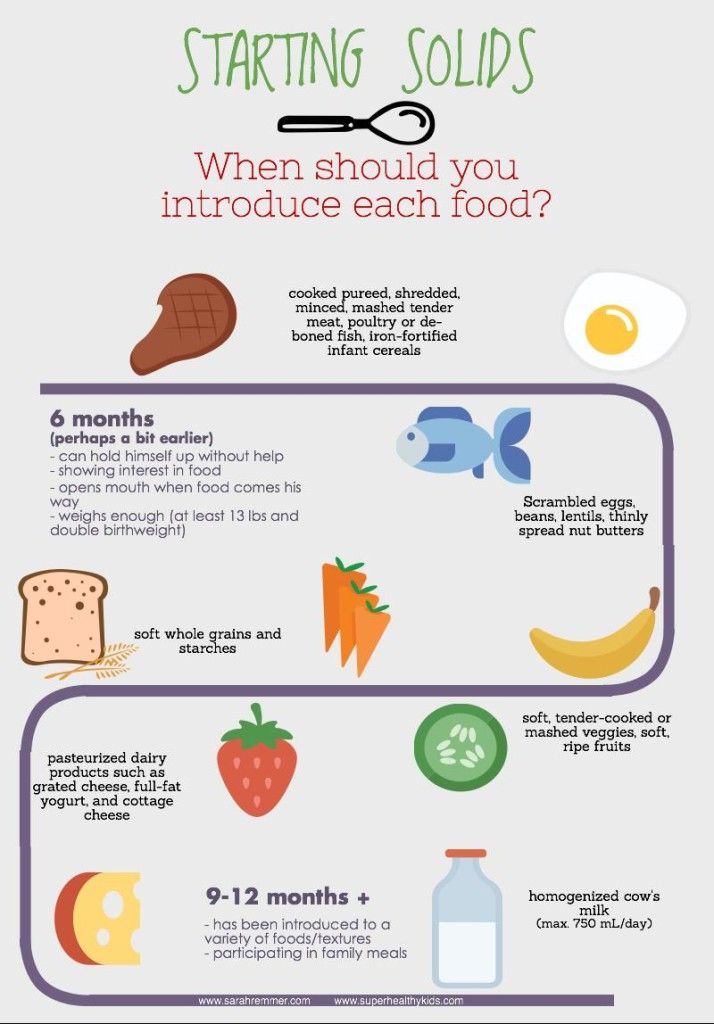
- Baby food cubes can only be defrosted in the refrigerator.
- Use of semi-finished products of industrial production is not desirable until 3-5 years.
Items 6 and 7 can be removed from the age of 10-18 months, since the child's body has already adapted to food intake, is able to digest dishes prepared in the morning or even yesterday. It is already possible to introduce a new product for about 3-5 days, also due to the age of the child and its better adaptation, and the gastrointestinal tract is more ready to digest unfamiliar foods. The consistency is most likely close to adult food, so this item also goes away by about 18 months. Points 8 and 9 remain with the child until the age of 5-7, while he is getting acquainted with new products. And only the rules of healthy eating remain.
I think it's clear what principles a children's recipe is based on, it must comply with the rules of healthy eating with a discount for the child's age. Because while the baby is small, he eats complementary foods of a homogeneous consistency, the products must be super fresh, so as not to burden the gastrointestinal tract with poisoning, serve fresh, freshly prepared foods every time, do not store them.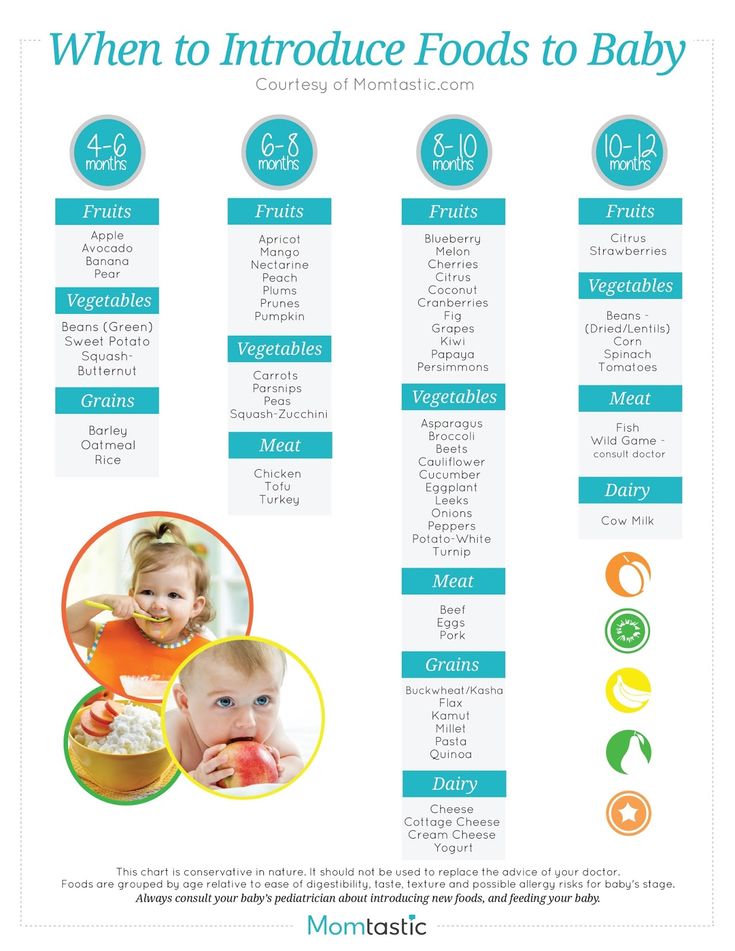 Gradually, the child grows, the consistency of baby food changes, the shelf life of the finished dish also changes. All these nuances should include a children's recipe.
Gradually, the child grows, the consistency of baby food changes, the shelf life of the finished dish also changes. All these nuances should include a children's recipe.
Another important thing to consider are frozen baby puree cubes, which are often prepared by parents of small children. It is also important to indicate the shelf life of frozen cubes, as well as the methods of defrosting, in what form the thawed baby food will be, how to thicken it if the consistency changes.
Children's recipe consists of various nuances, parents must understand and prepare complementary foods based on these rules.
Recipes for baby purees often state that the dish can be prepared in 3-4 different ways. In order not to confuse parents, we will explain.
In the example of zucchini puree, which can be prepared in different ways, the taste of the finished product will be different, as well as the cooking time.
- Prepare for steam
- Bake
- Boil in water
- Tighten in a pan
- Thaure the zucchini cubes and touch
- Open a jar of children's power
options for preparing children's recipe
I got 5 ways to prepare a widow.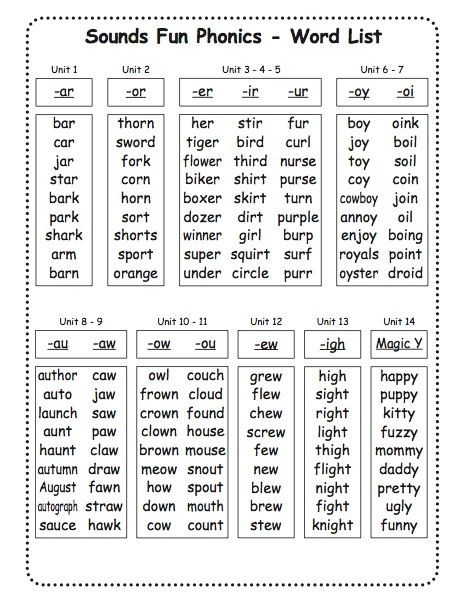 easy option. Accordingly, there will be 5 children's recipes or one recipe consisting of 5 subgroups of possibilities for cooking zucchini for a child. We also take into account the age of the child and the consistency of the product, which changes. So at the beginning of complementary foods, the baby will receive a uniform consistency, closer to 9-10 months with small pieces, by 12 months the baby will most likely be served zucchini in pieces. And a good children's recipe should include all these nuances that are important for every mother to know.
easy option. Accordingly, there will be 5 children's recipes or one recipe consisting of 5 subgroups of possibilities for cooking zucchini for a child. We also take into account the age of the child and the consistency of the product, which changes. So at the beginning of complementary foods, the baby will receive a uniform consistency, closer to 9-10 months with small pieces, by 12 months the baby will most likely be served zucchini in pieces. And a good children's recipe should include all these nuances that are important for every mother to know.
What is a balanced children's prescription?
To understand what a balanced children's recipe is, it is necessary to answer the question, what is a balanced diet?
Balanced Nutrition is a ratio of the following proportions: a quarter of protein, a quarter of carbohydrates and half of vegetables.
Six types of nutrients are essential for survival: proteins, carbohydrates, lipids (fats), vitamins, minerals and water. Proteins, carbohydrates and fats are macronutrients. "Macro" means that our body needs these nutrients in large quantities.
Proteins, carbohydrates and fats are macronutrients. "Macro" means that our body needs these nutrients in large quantities.
Macronutrients provide energy, measured in kilojoules or kilocalories. Vitamins and minerals are considered micronutrients because our bodies only need them in small amounts. Water is another important macronutrient because the volume of water excreted by the body through metabolic processes is much less than the amount of water we lose every day through sweating, urine, stool and breathing.
Balanced children's recipe
A balanced children's recipe should include the principles of a balanced diet. But how do you ensure your baby is balanced at the start of complementary foods? It's very simple, just feed the baby with breast milk or formula; up to a year, it is these liquids that provide the baby's body with all the important elements. Therefore, parents are advised until the child is 12 months old to expand the diet, and not increase the portion.
After 12 months, try to apply the principles of a balanced diet, but without fanaticism, focus more on intuitive eating, when a plate with a variety of food is placed in front of the child, and already the baby chooses what to eat and in what quantity. As I wrote earlier in other articles, children sometimes can overeat some foods with a lack of some elements in the body, and then for a long time these foods are not eaten. It is normal for parents to give their child choices in a varied and balanced diet.
How to adapt adult dishes to children's recipes?
Adult dishes can be easily adapted to children's recipes. To do this, you need to answer a few questions:
- What products in the adult recipe are introduced into complementary foods for a child?
- Which ingredients in an adult recipe can be substituted or omitted without changing the taste of the dish?
- Is it possible to use a healthy cooking method such as roasting or steaming?
- Is it possible to refuse spices and spices without changing the taste of the dish?
- Is it possible to change the consistency of a dish without changing the taste?
- Is the recipe in line with a healthy diet?
How to turn an adult dish into a children's recipe?
Of course, you can ask more questions, but these are the main ones that distinguish an adult recipe from a child's. Recipes for children under 10 months differ from adult cuisine in their one-component and consistency. At this stage of baby food, it is better not to use adult cuisine recipes, but to prepare food according to children's recipes that are recommended for a child of this age. From about 10 months old, you can cook according to family recipes, but taking into account the age of the child and the products that he has tried at the current stage. For example, we cook pilaf, but we take not the usual ingredients, but those with which the baby is familiar. So for children's pilaf we will take meat (rabbit or turkey), onions, carrots and rice, without salt and spices.
Recipes for children under 10 months differ from adult cuisine in their one-component and consistency. At this stage of baby food, it is better not to use adult cuisine recipes, but to prepare food according to children's recipes that are recommended for a child of this age. From about 10 months old, you can cook according to family recipes, but taking into account the age of the child and the products that he has tried at the current stage. For example, we cook pilaf, but we take not the usual ingredients, but those with which the baby is familiar. So for children's pilaf we will take meat (rabbit or turkey), onions, carrots and rice, without salt and spices.
For the first pilaf, the meat is not fried, but boiled a little in water, onions and carrots are sautéed a little, rice is soaked. Combine all ingredients in a saucepan and simmer for about 30 minutes. The perfect first pilaf cooked in a double boiler. Parents can choose the cooking method, if possible. The first pilaf will look more like boiled meat porridge with vegetables. When the body can digest pilaf, namely by about 1-2 years, depending on how the family prepares this dish, then it is given from the common table.
When the body can digest pilaf, namely by about 1-2 years, depending on how the family prepares this dish, then it is given from the common table.
Until what age do we prepare children's recipes?
Until about 5-7 years of age, the child's diet is expanded, i. the child gets acquainted with various products up to about 7 years. For example, mushrooms can be given after 5 years, etc. Therefore, children's recipes are prepared up to 5-7 years. But in practice, children from the age of 2 eat from the general table, taking into account their familiarity with the products. Parents try to adjust their diet in such a way that it matches a healthy diet, which means that children are allowed to eat. Recipes for children are adapted by many parents for themselves, someone begins to eat more properly , someone reviews family meals, makes changes to them, someone cooks separately for a child, separately for adults, this is everyone's choice, no matter what recipes are used to prepare food for a child.





